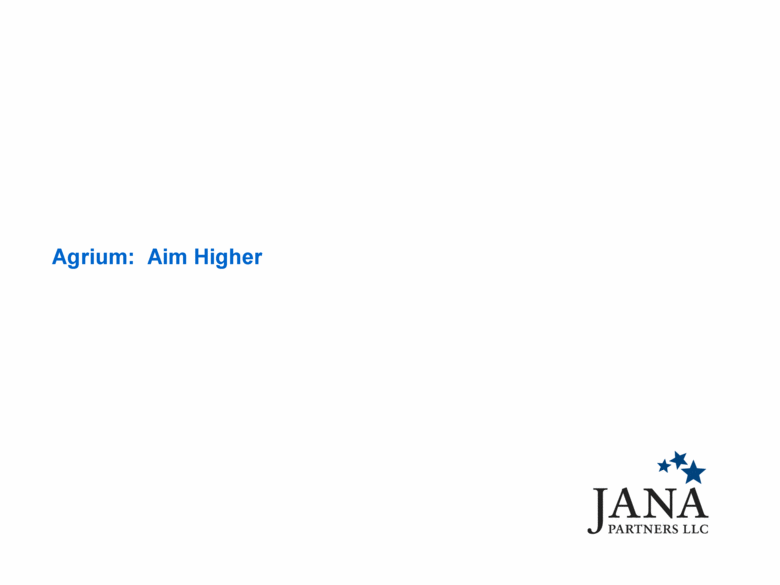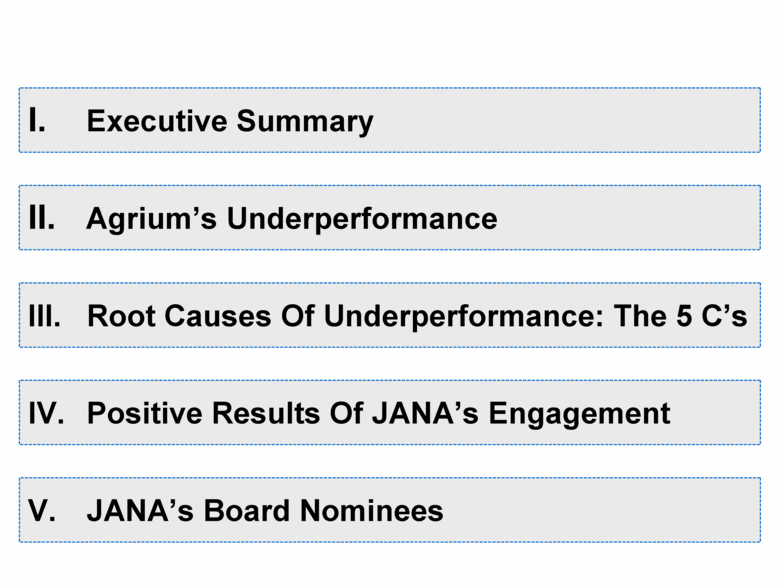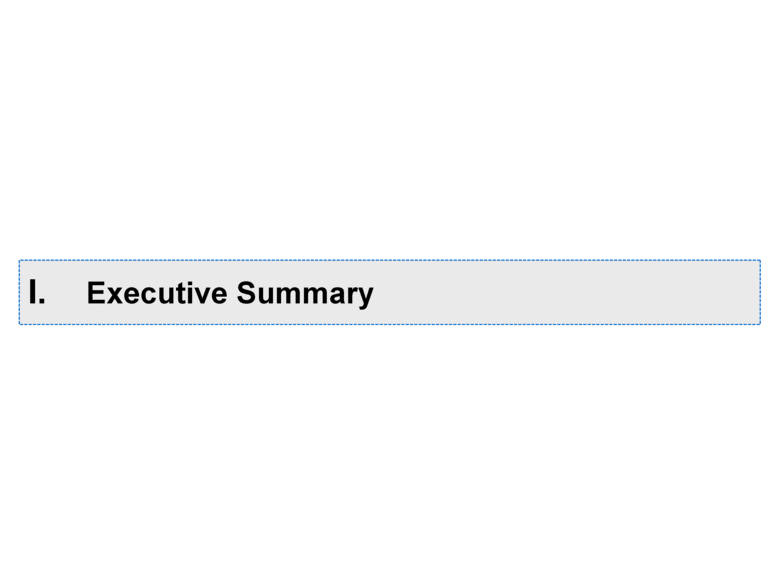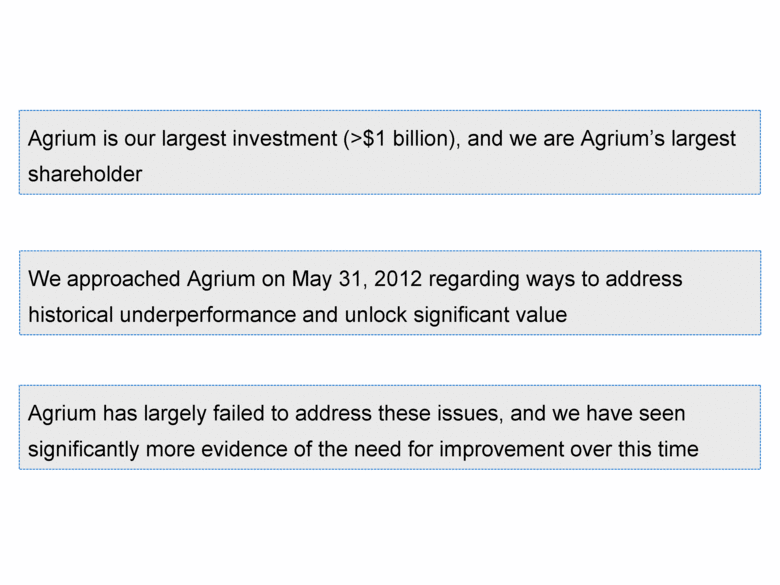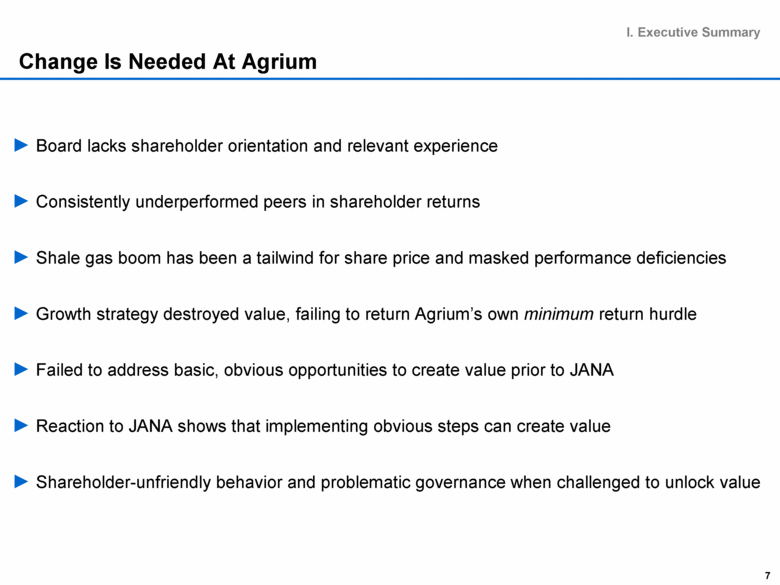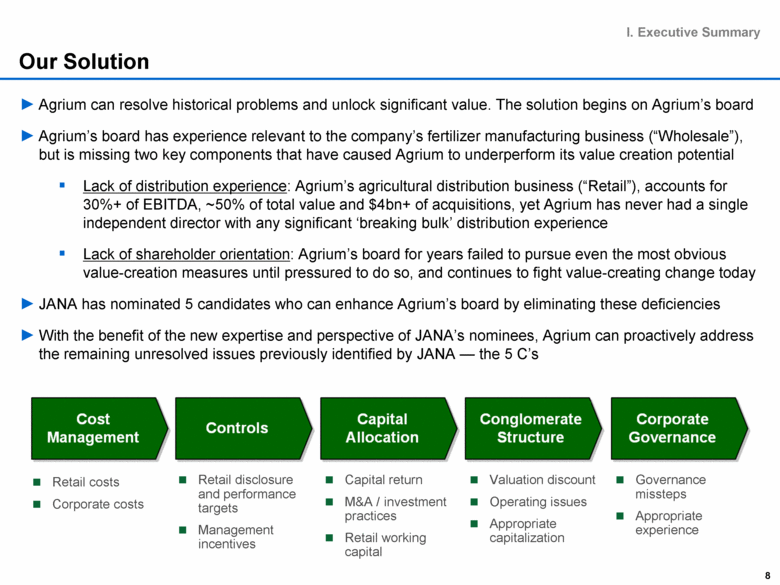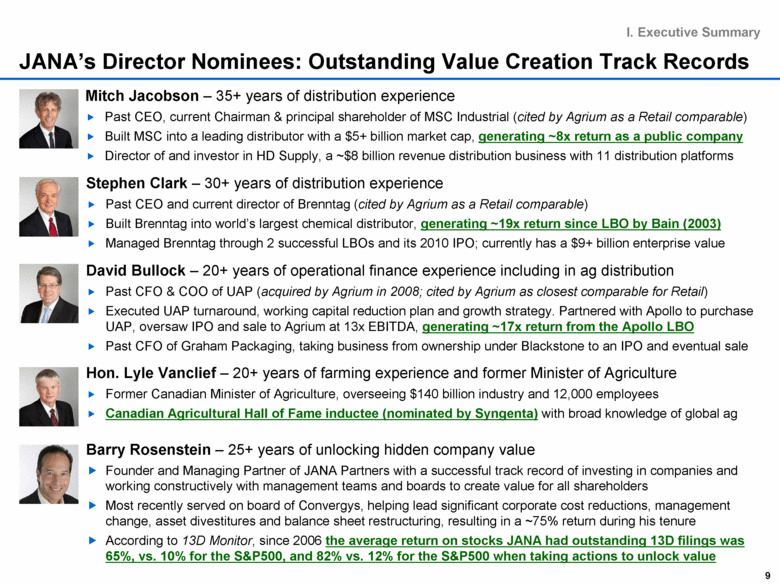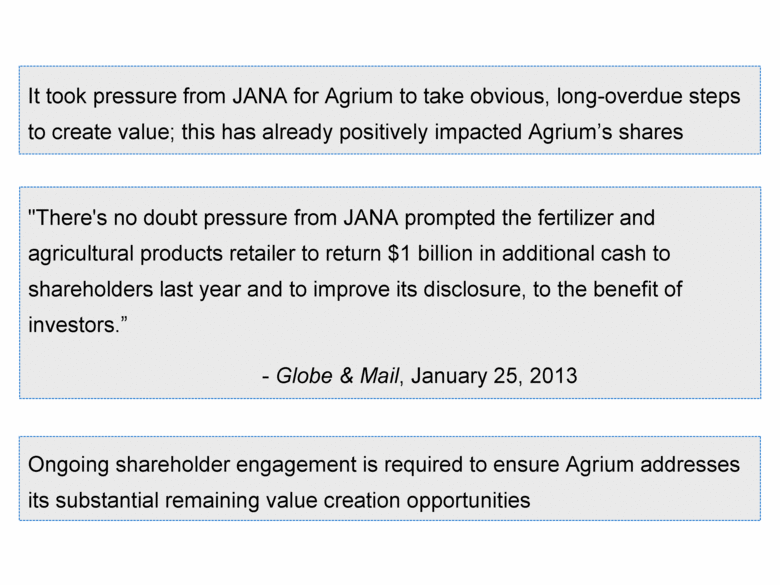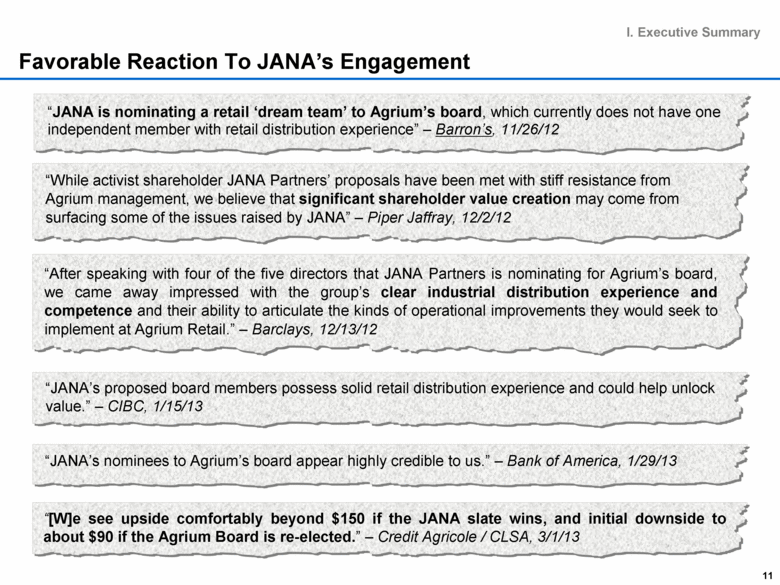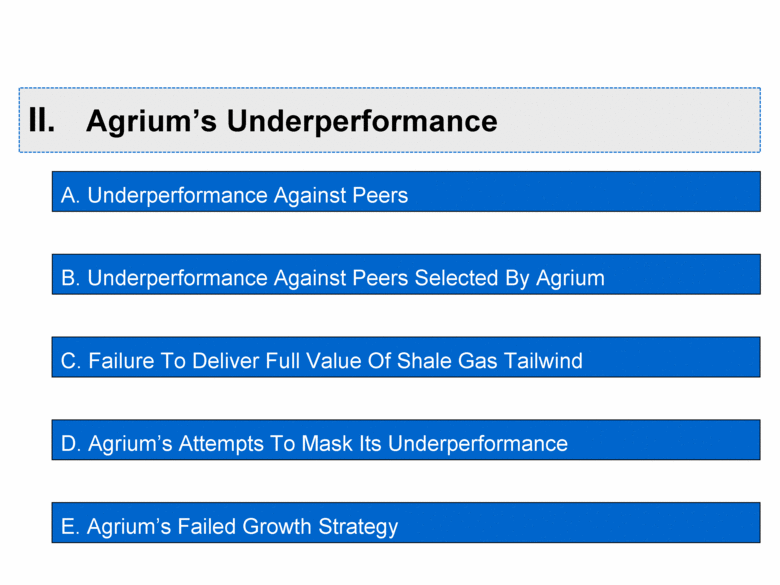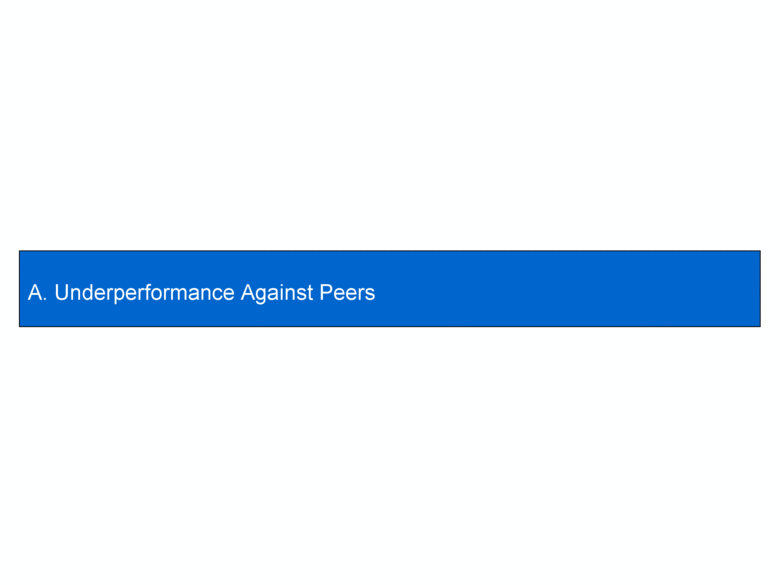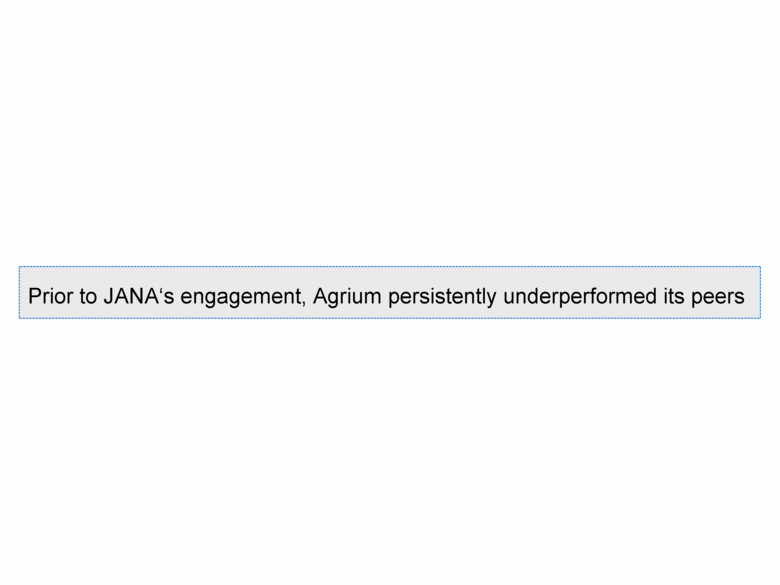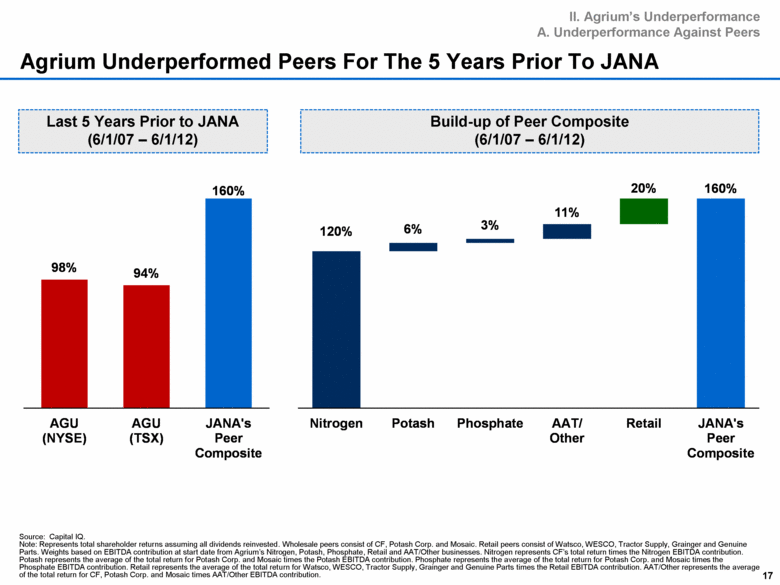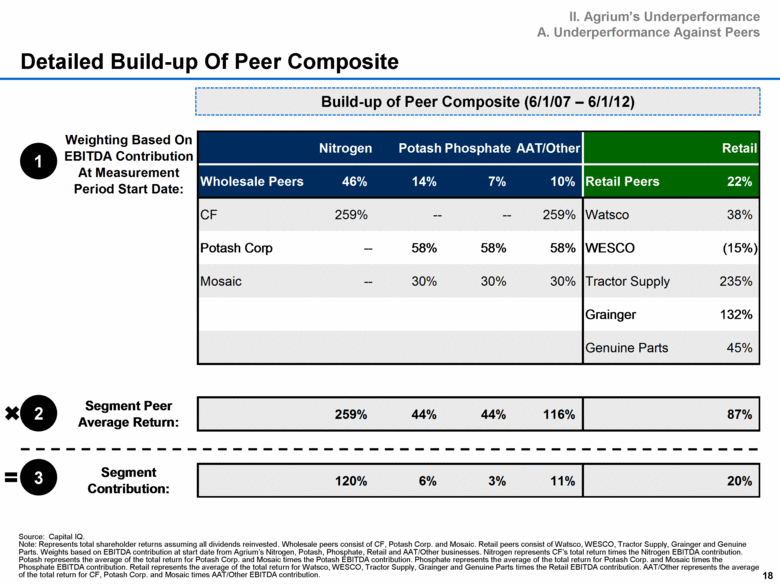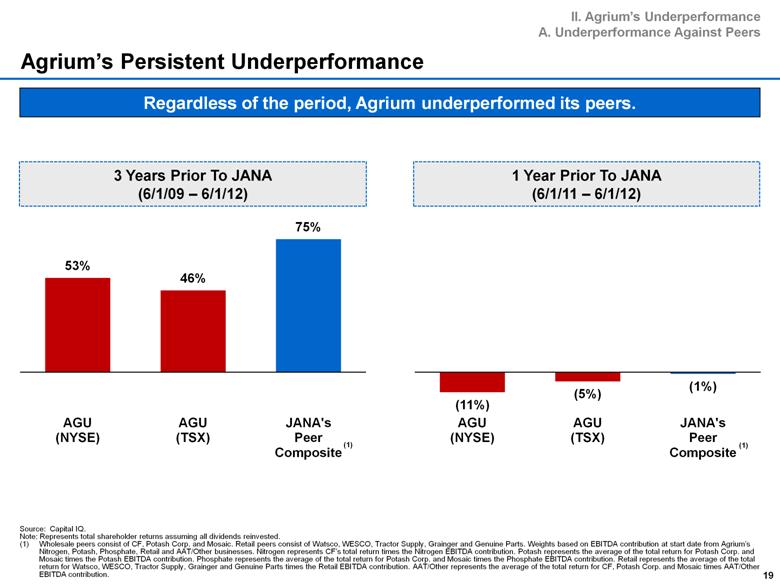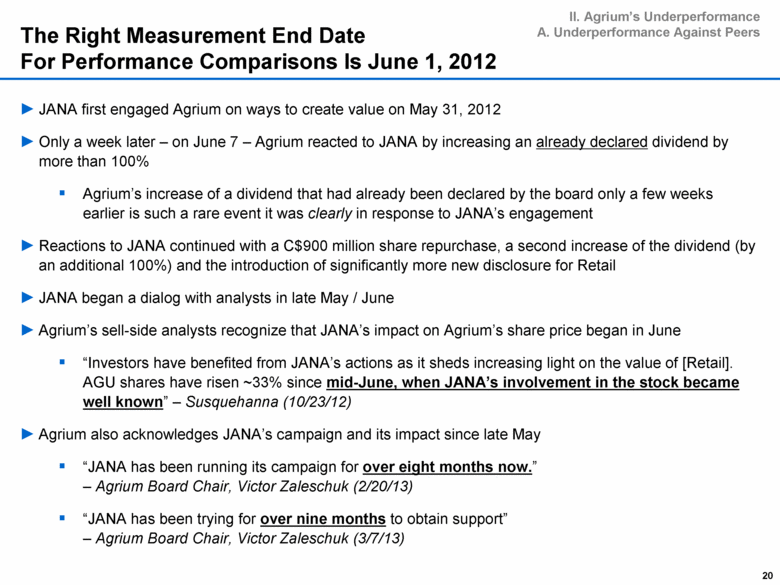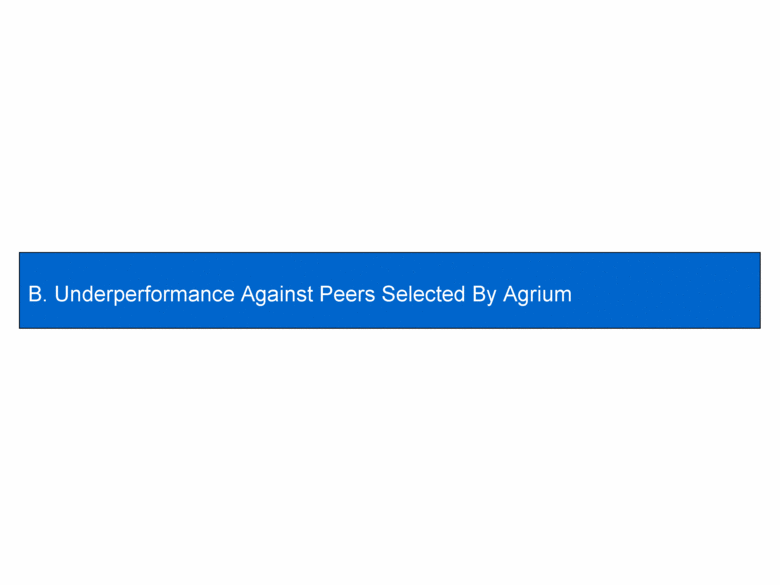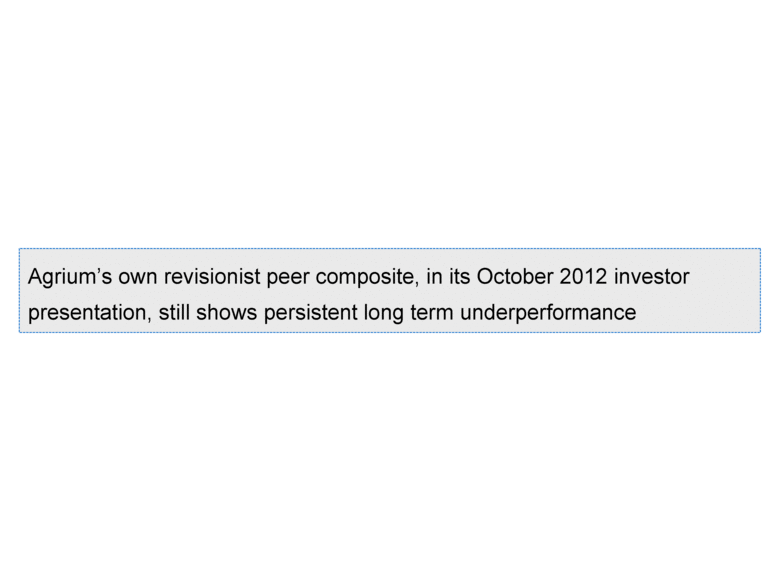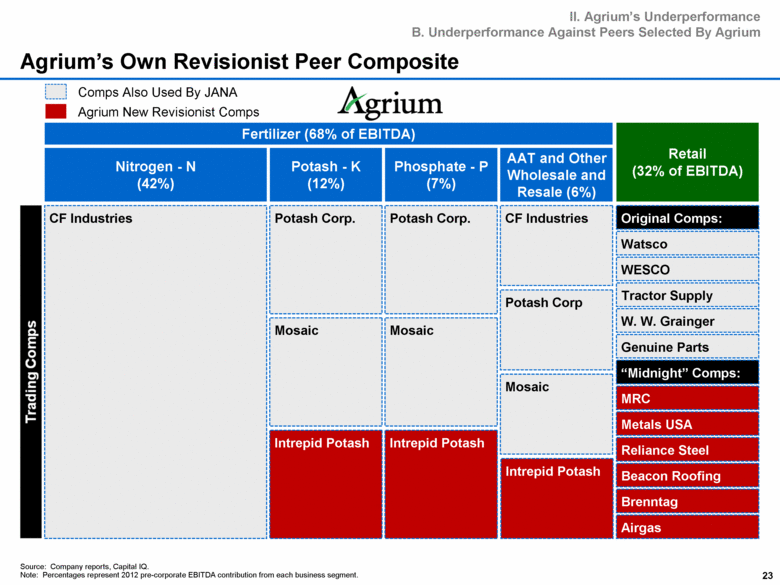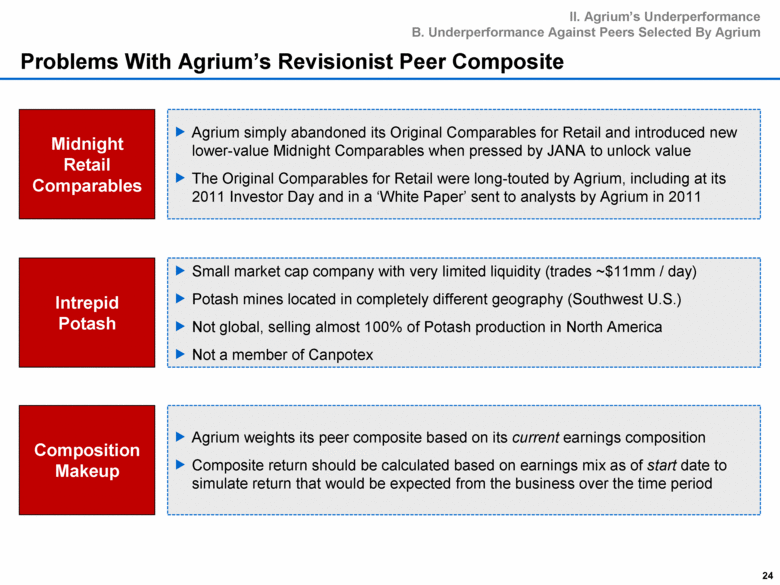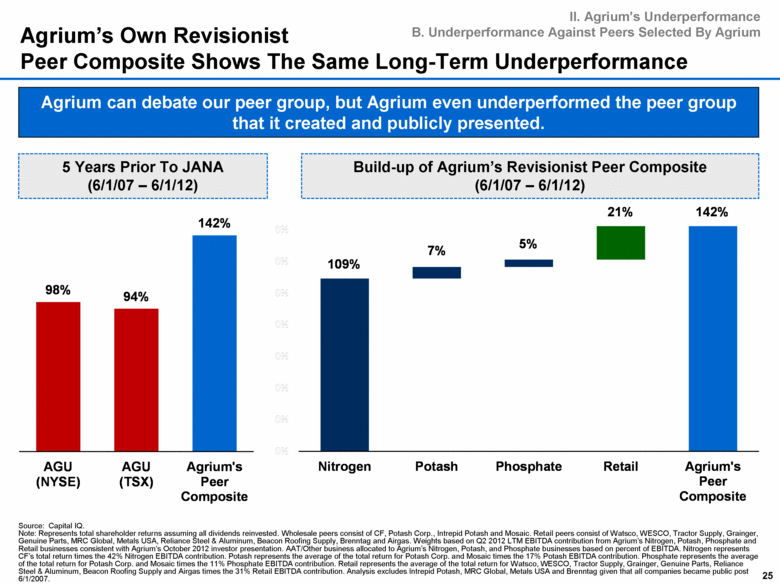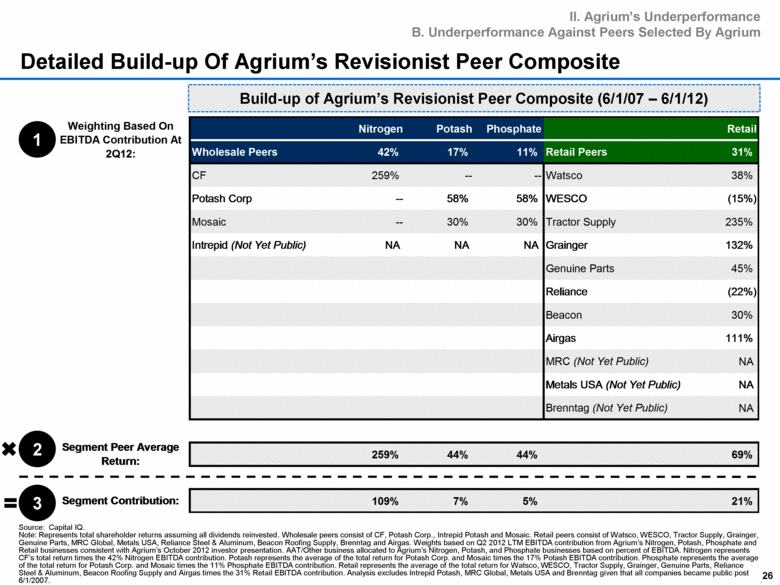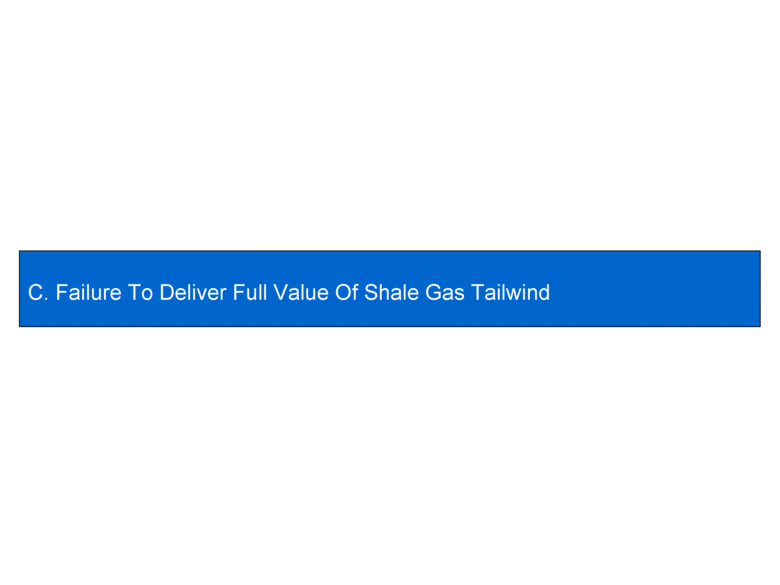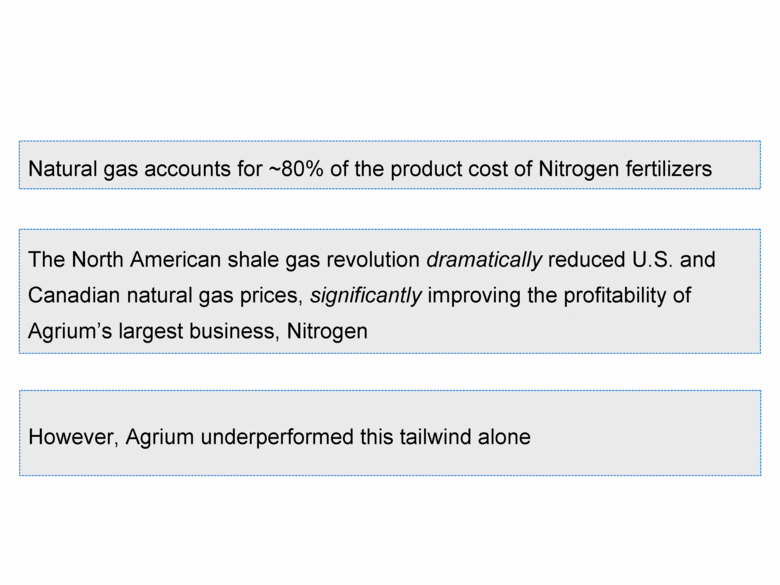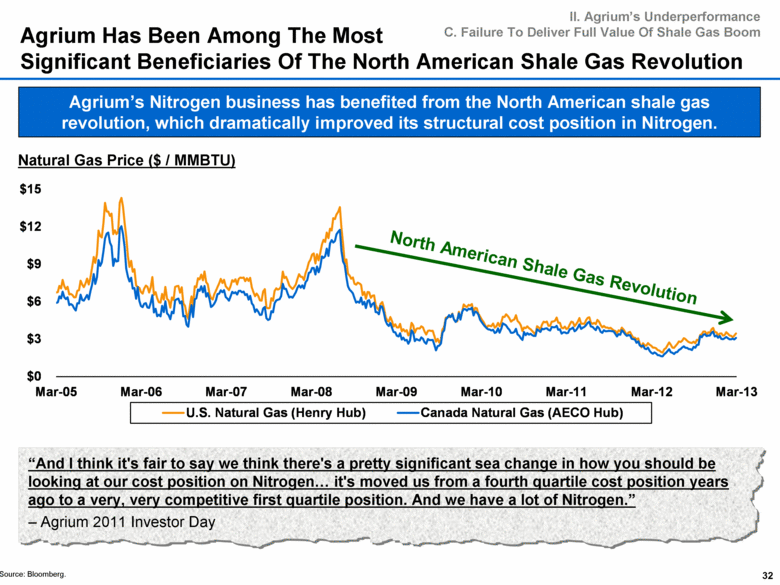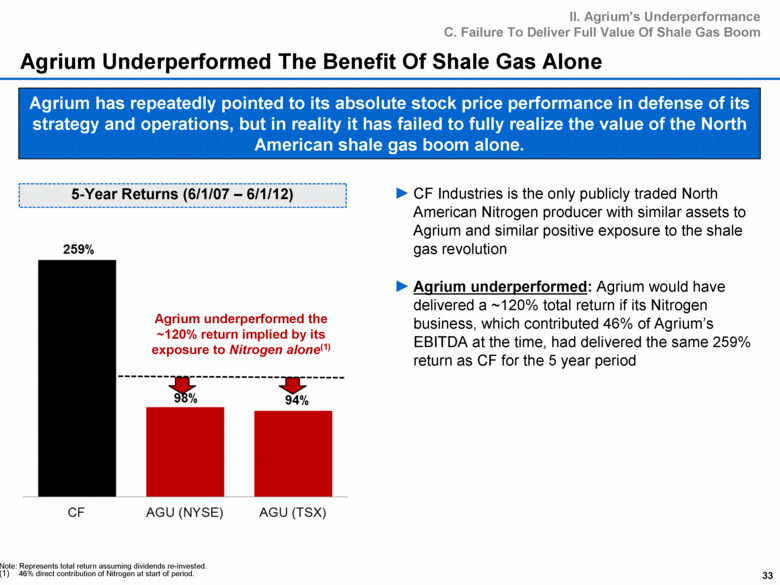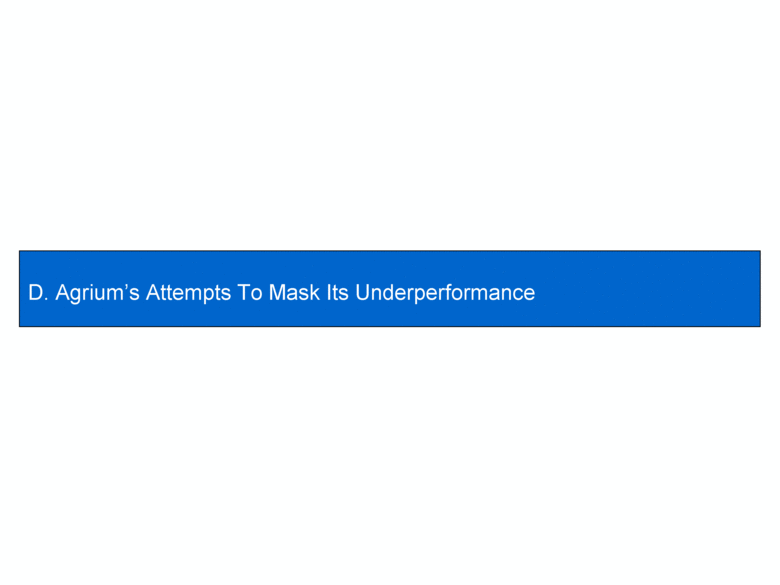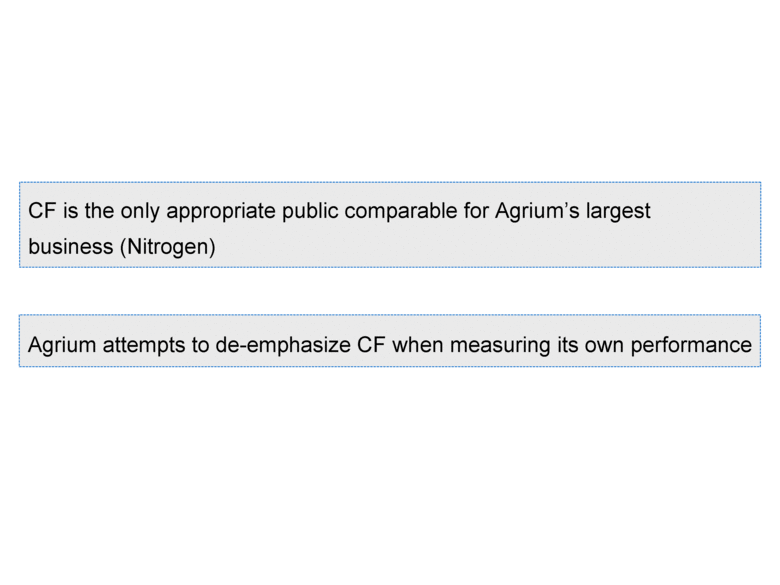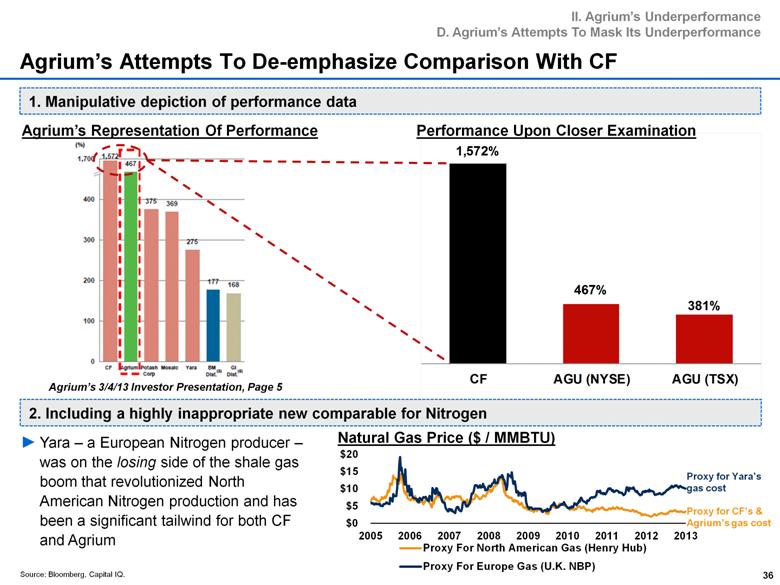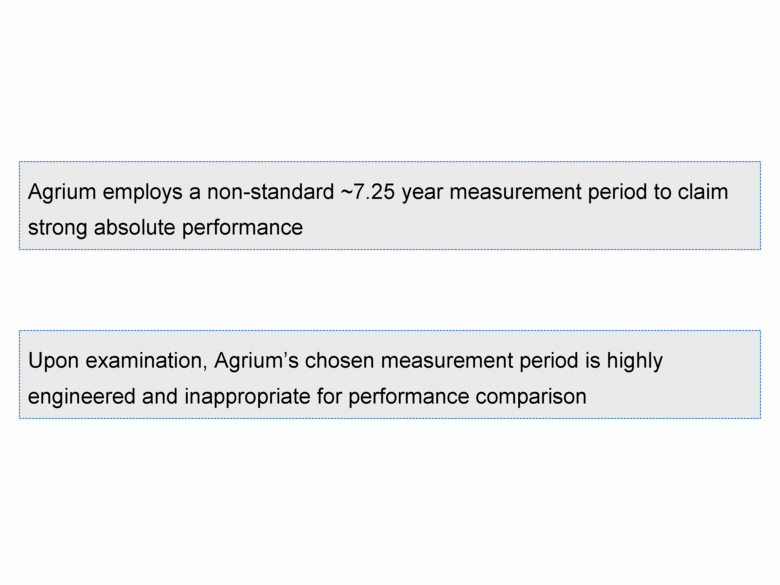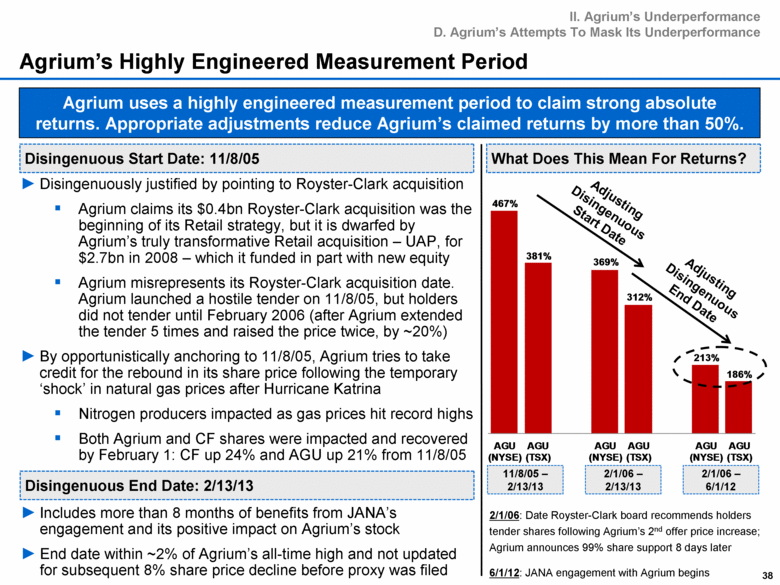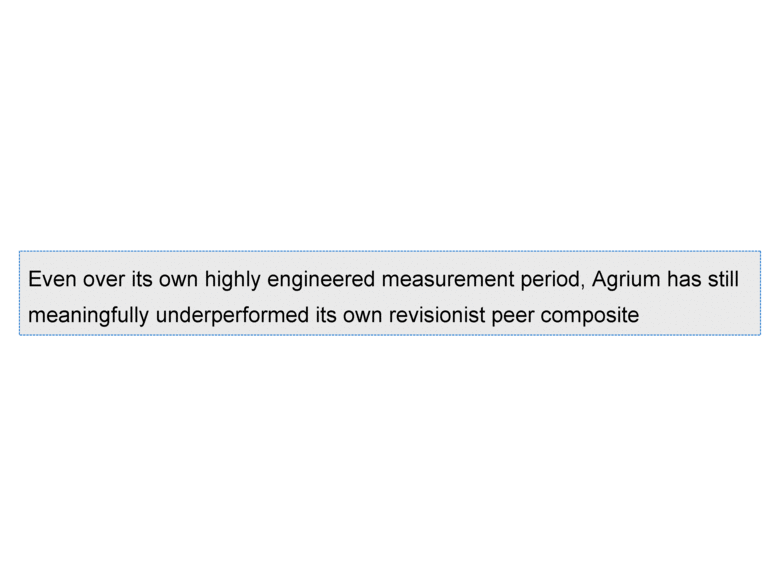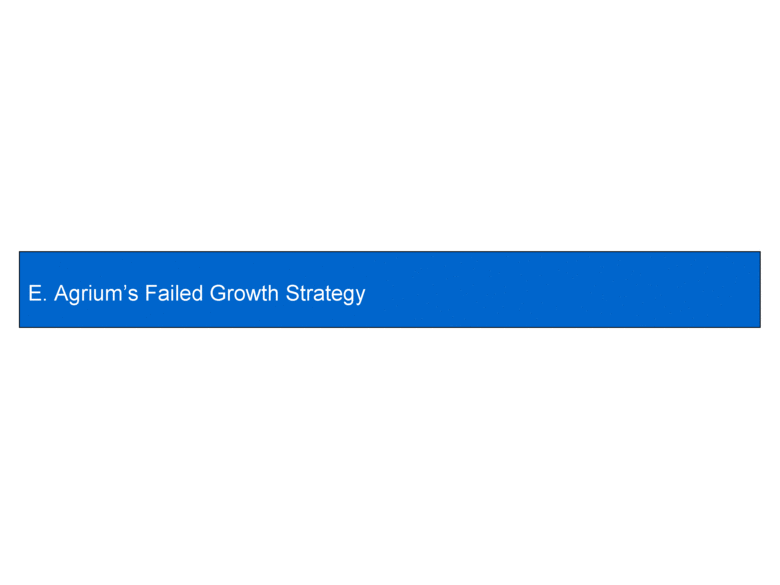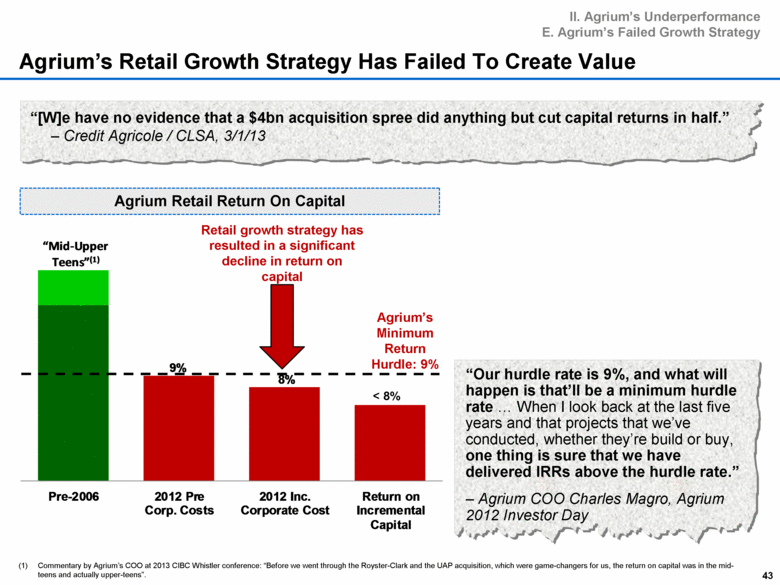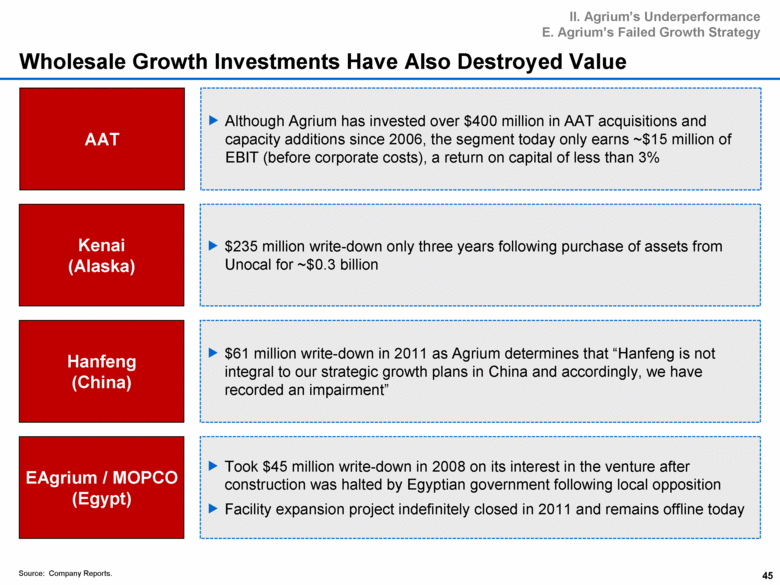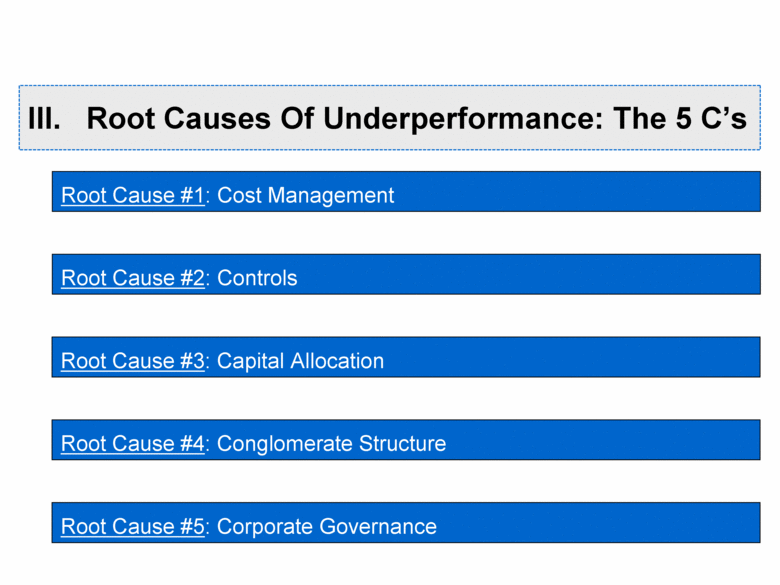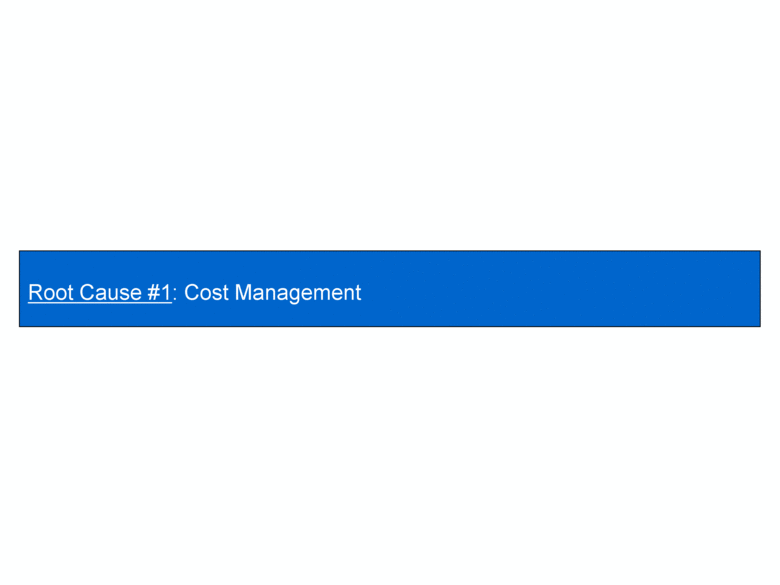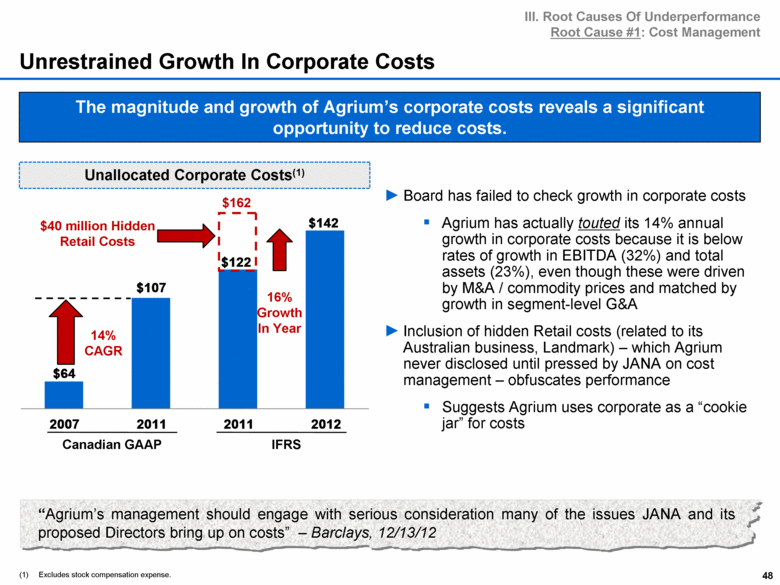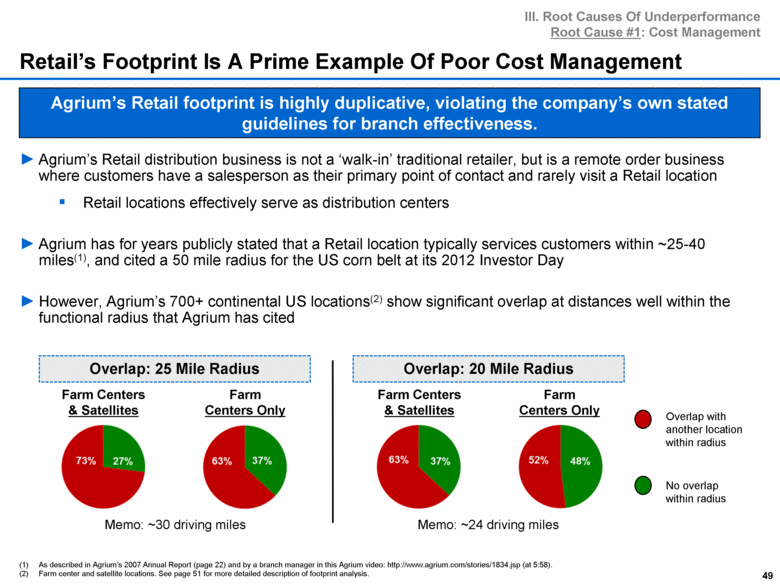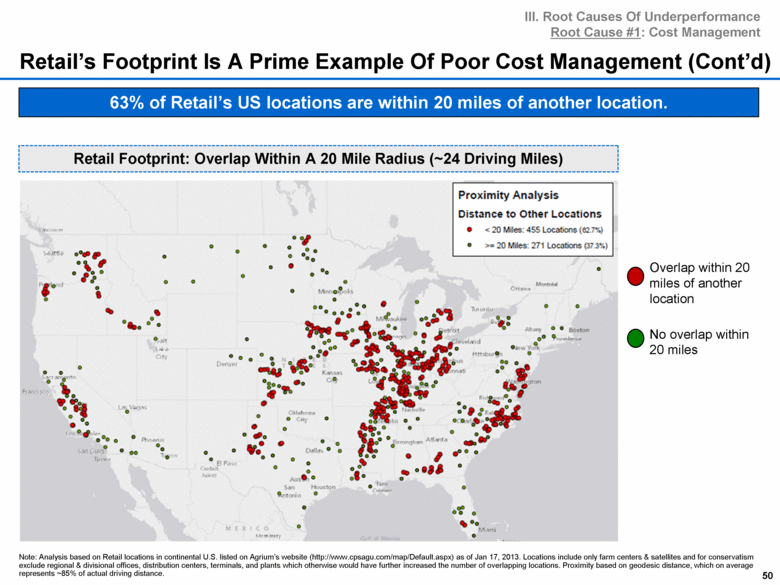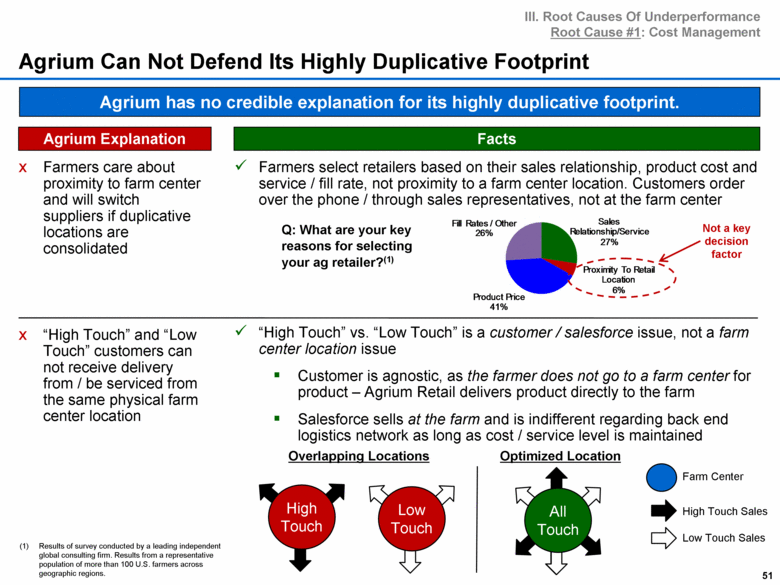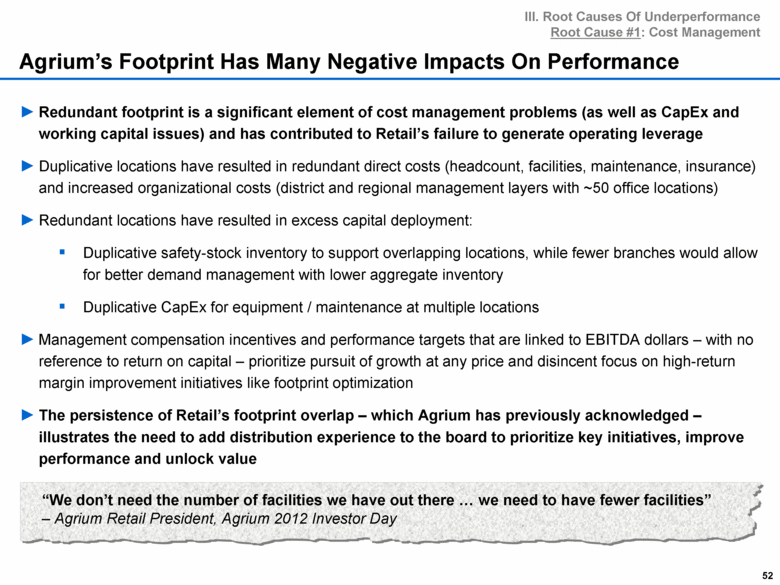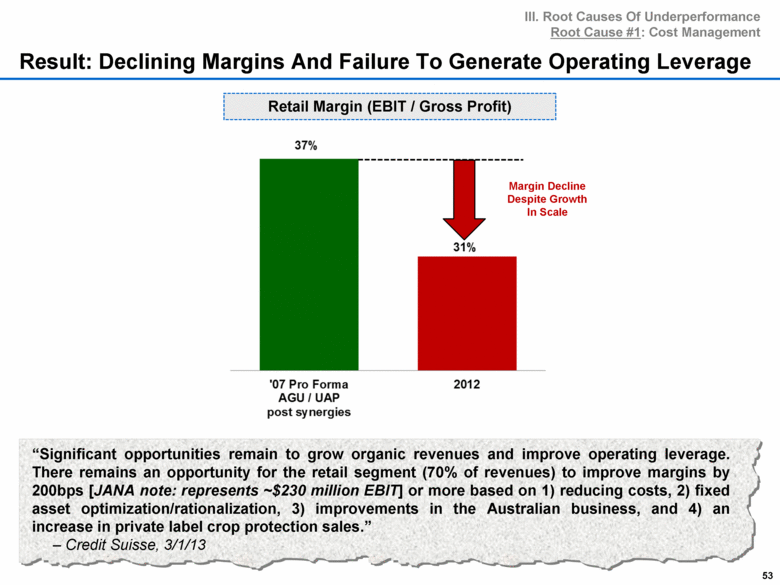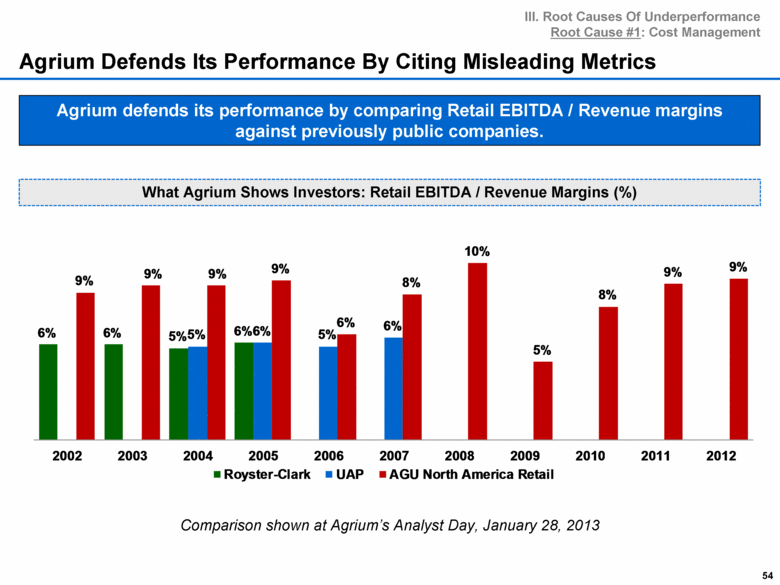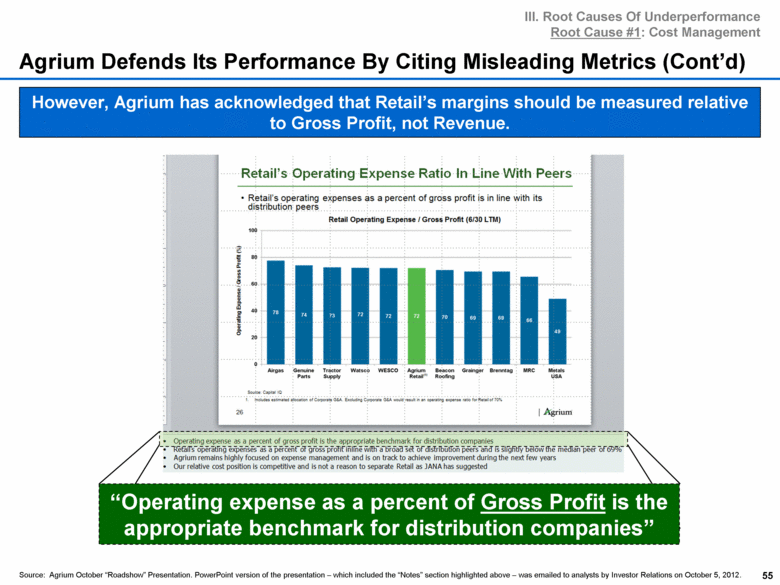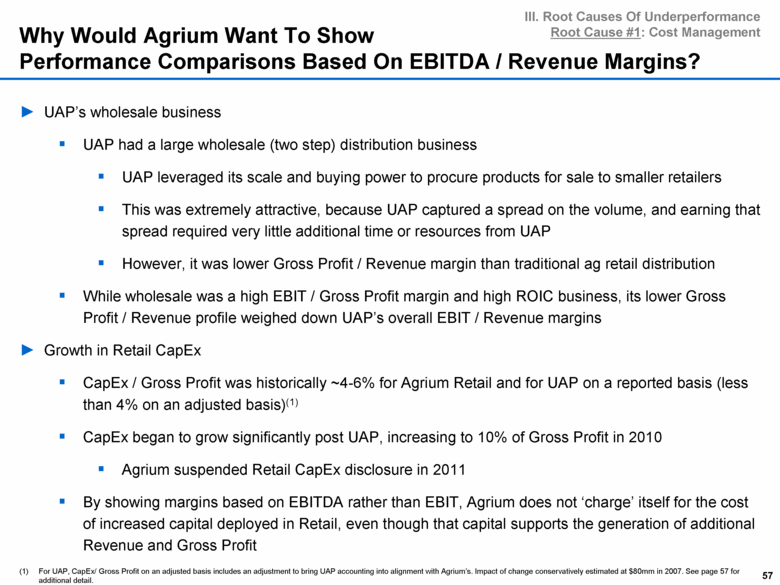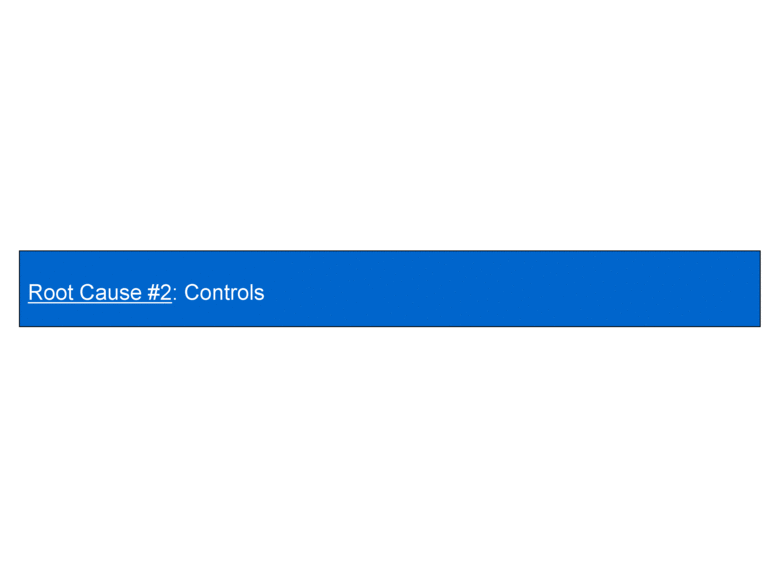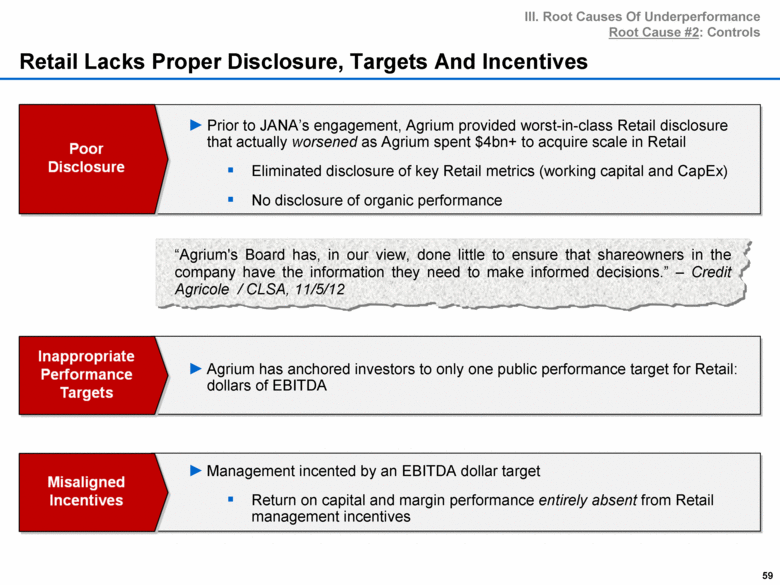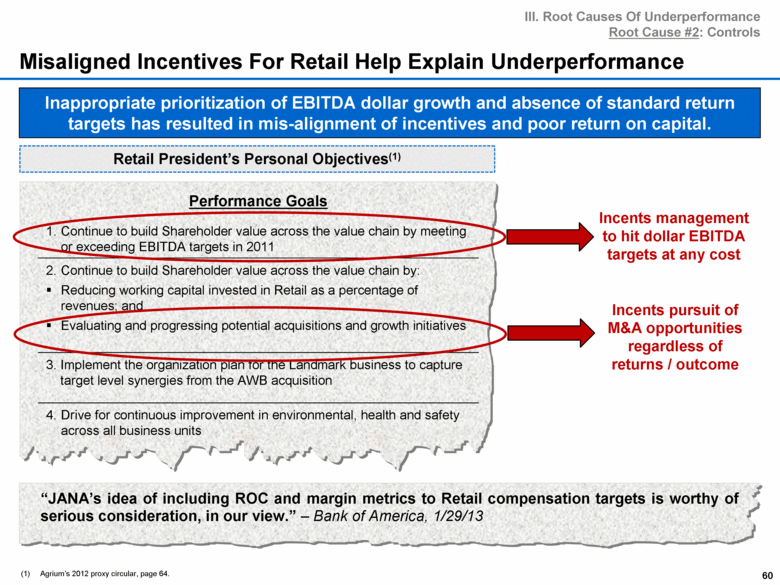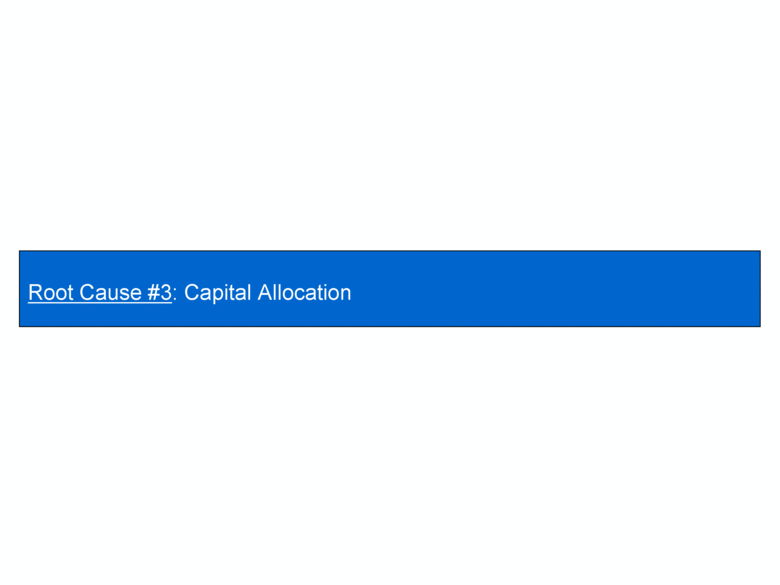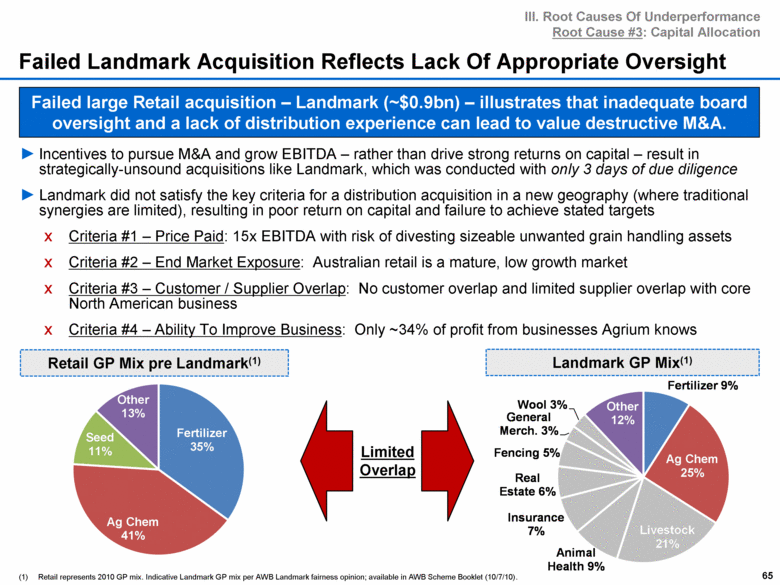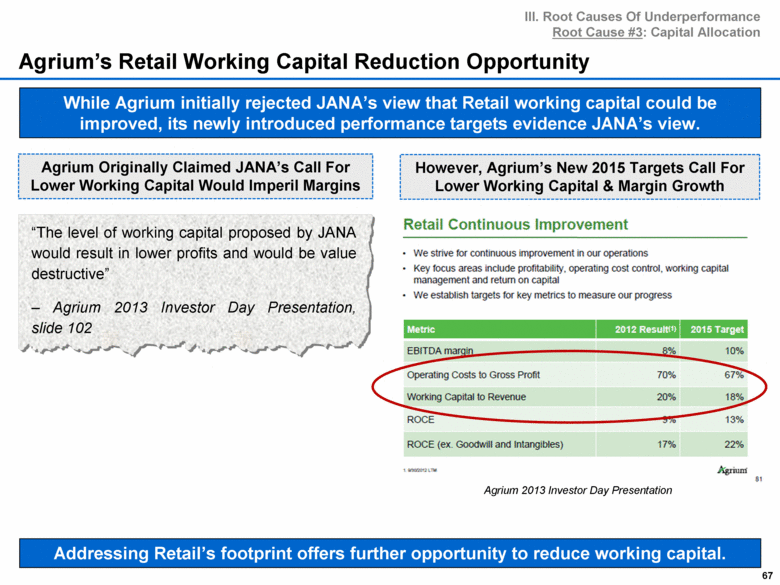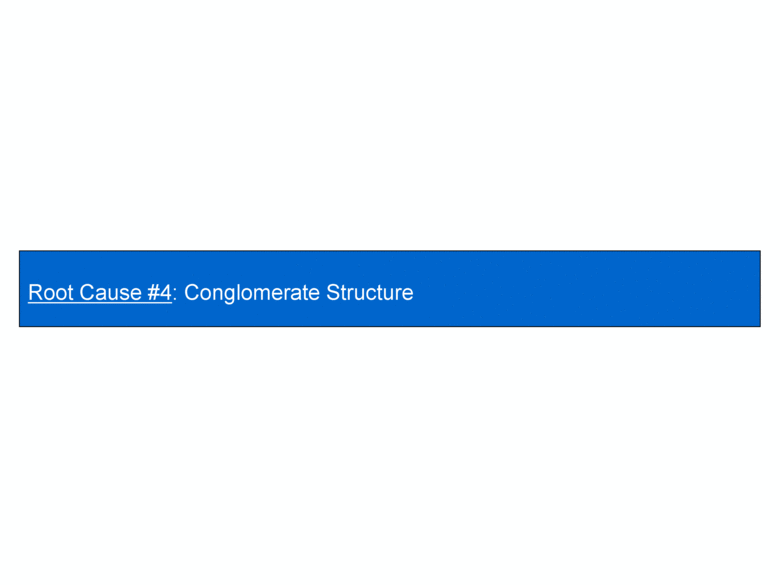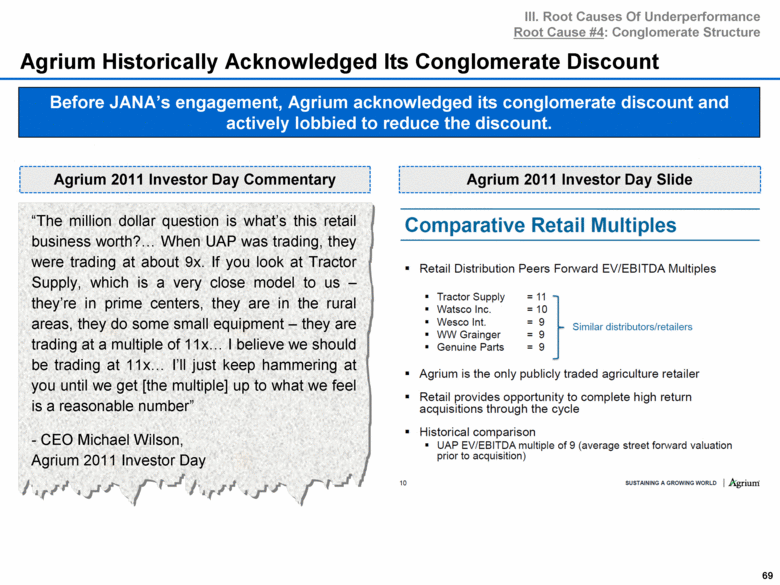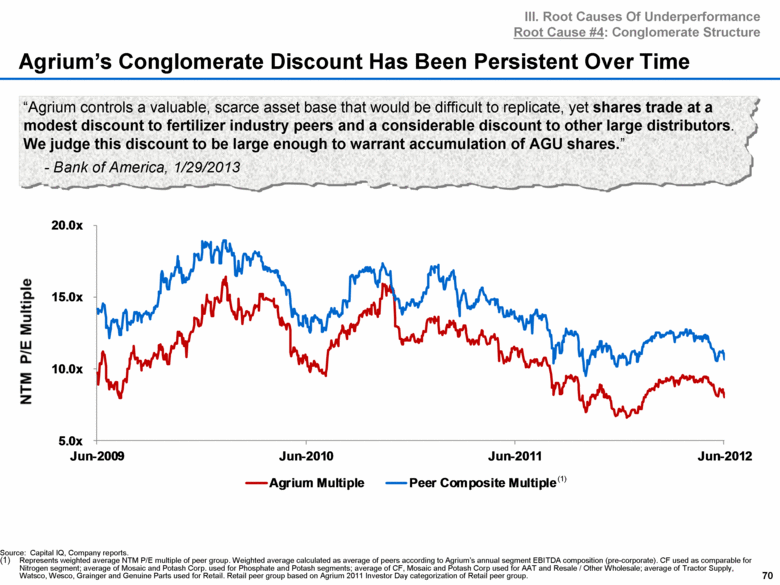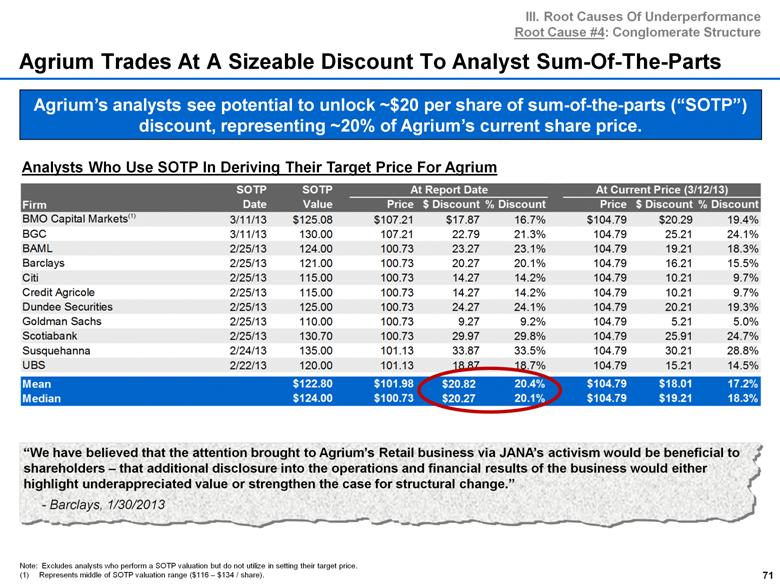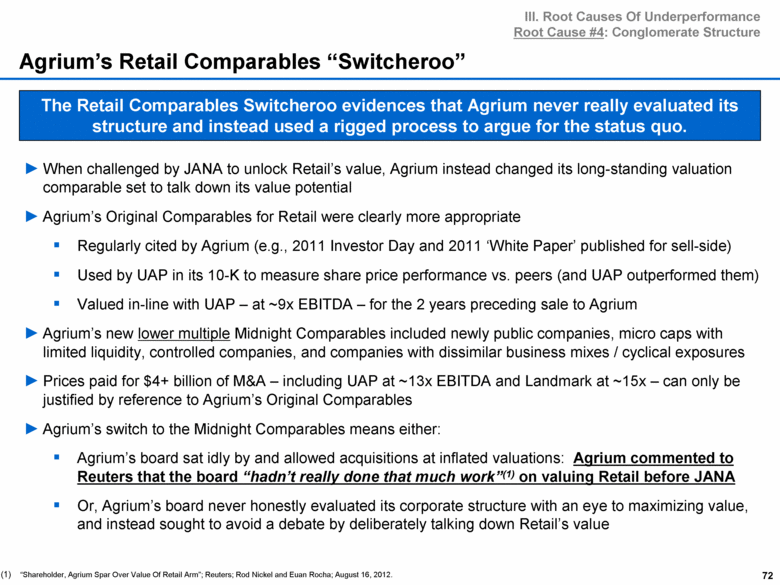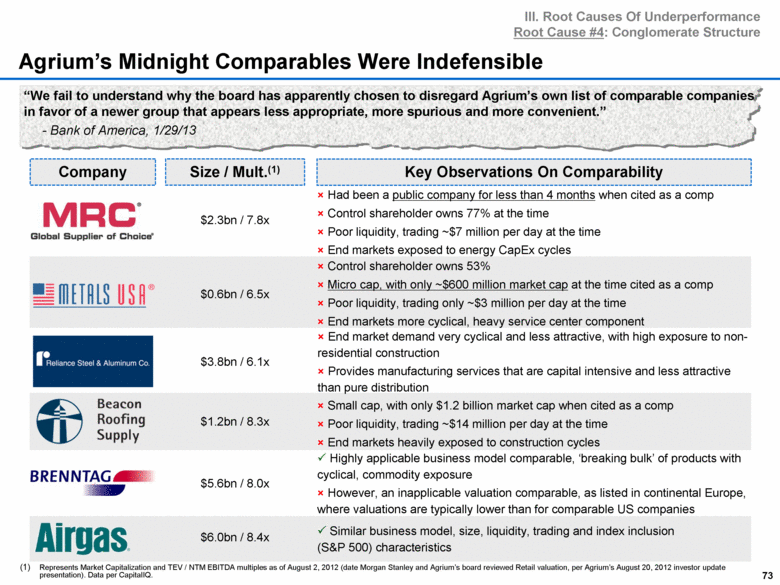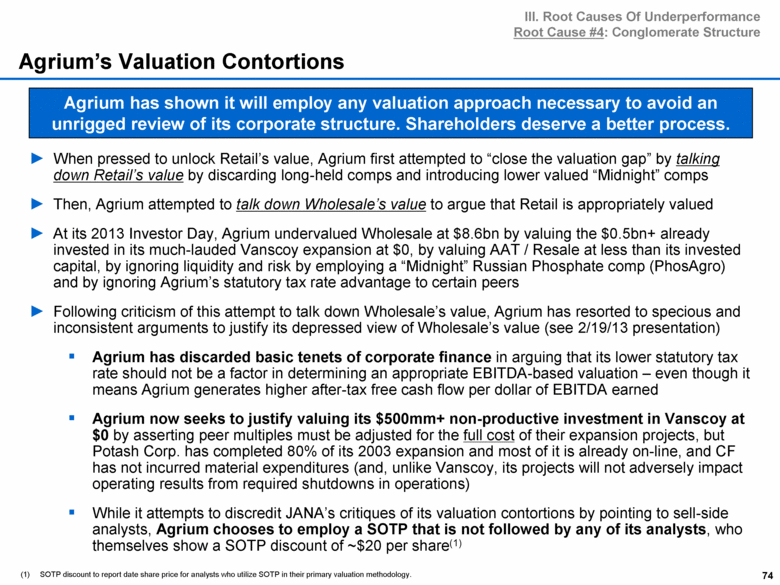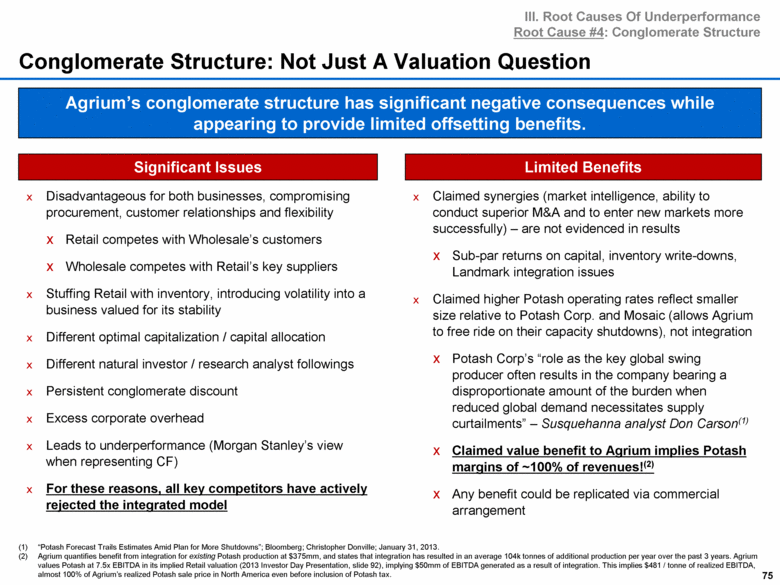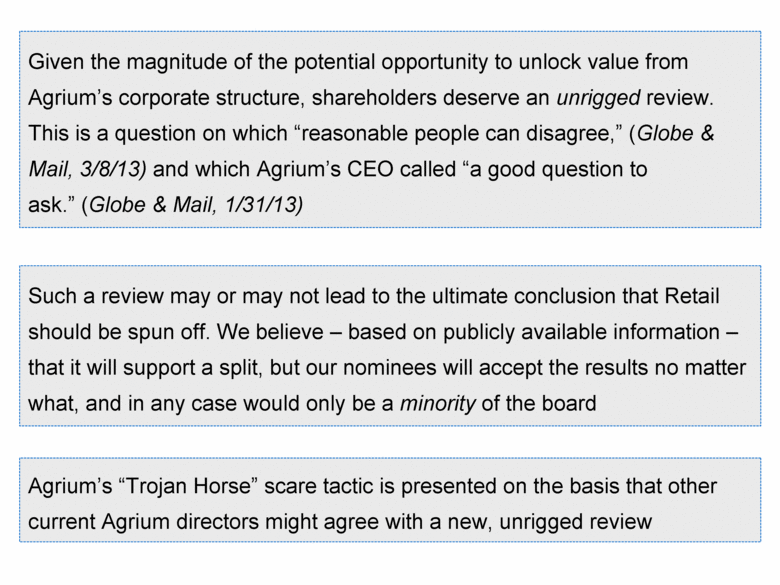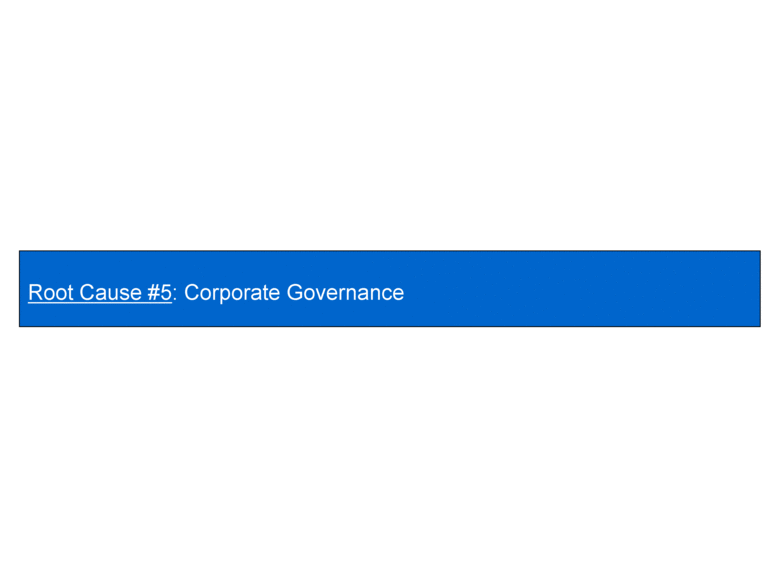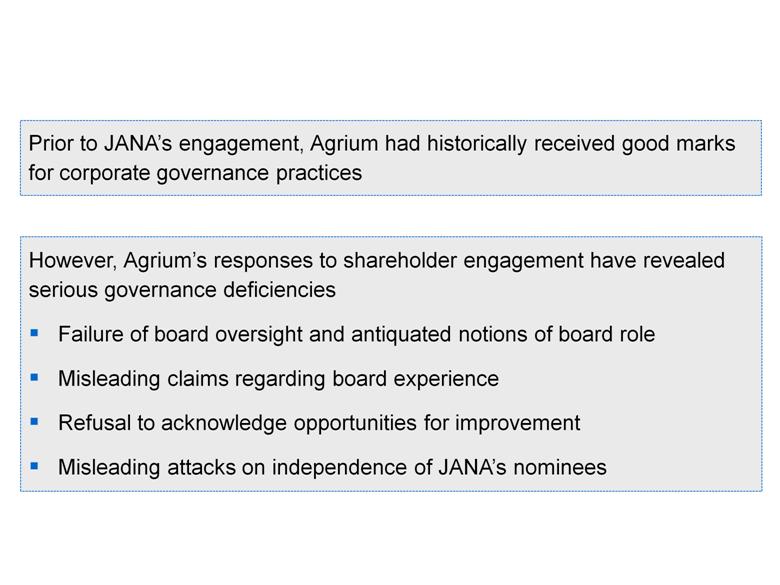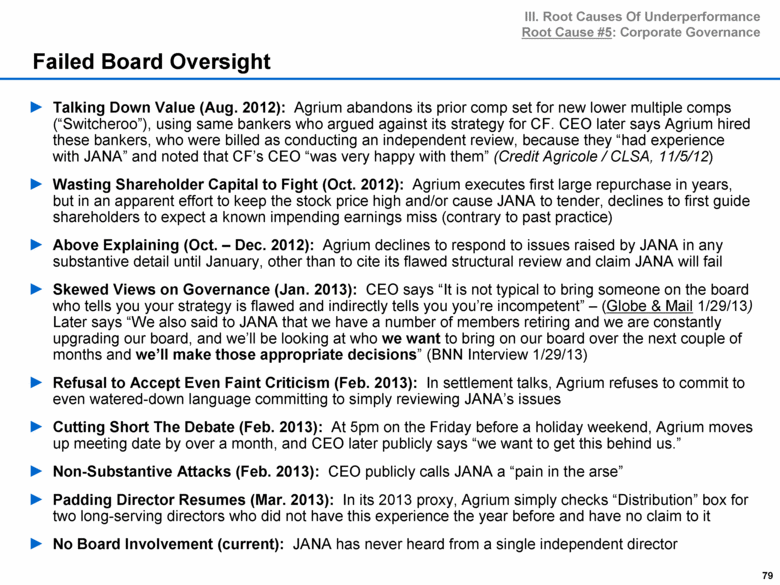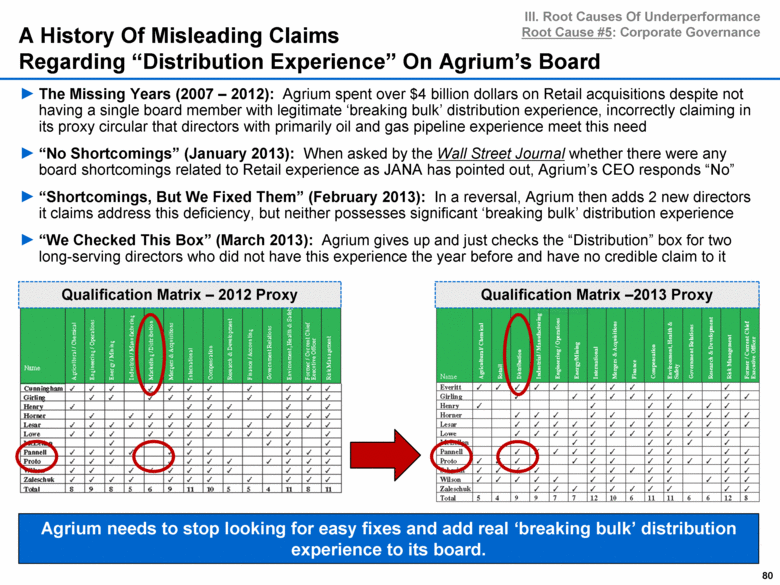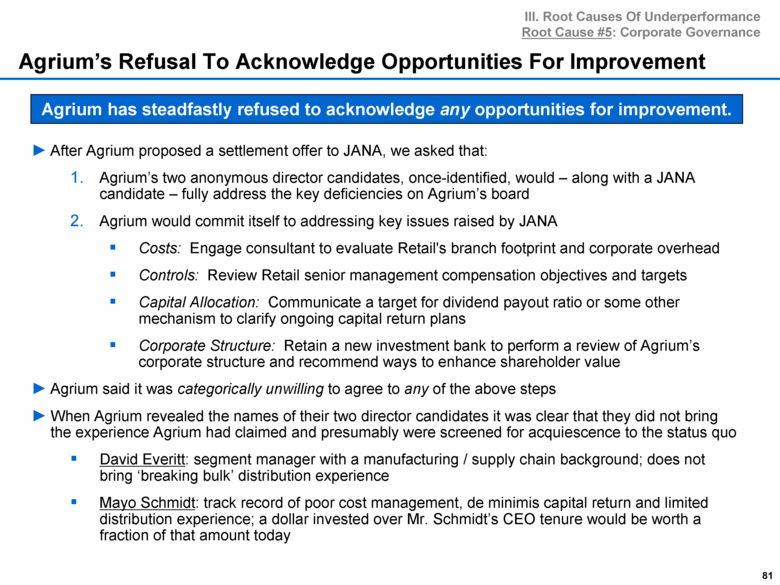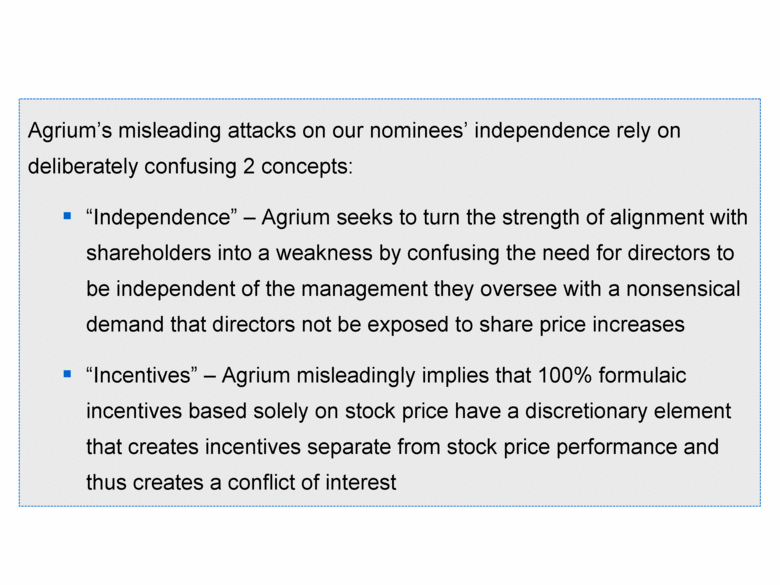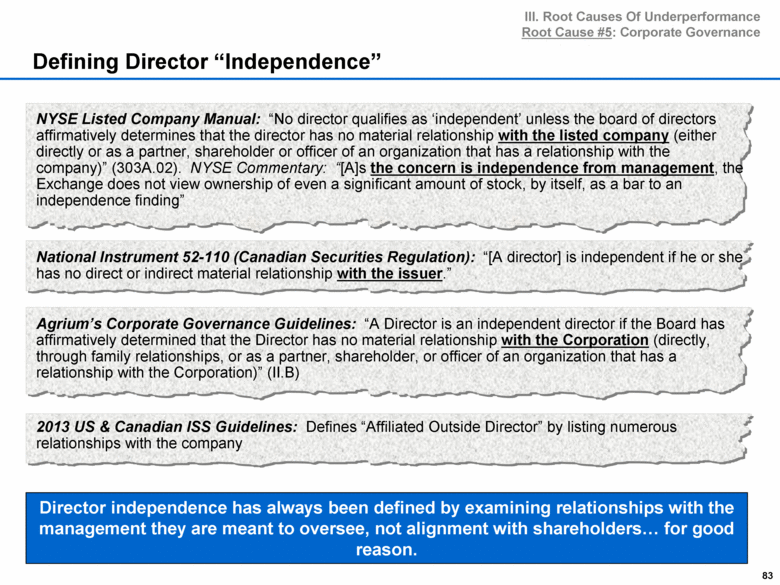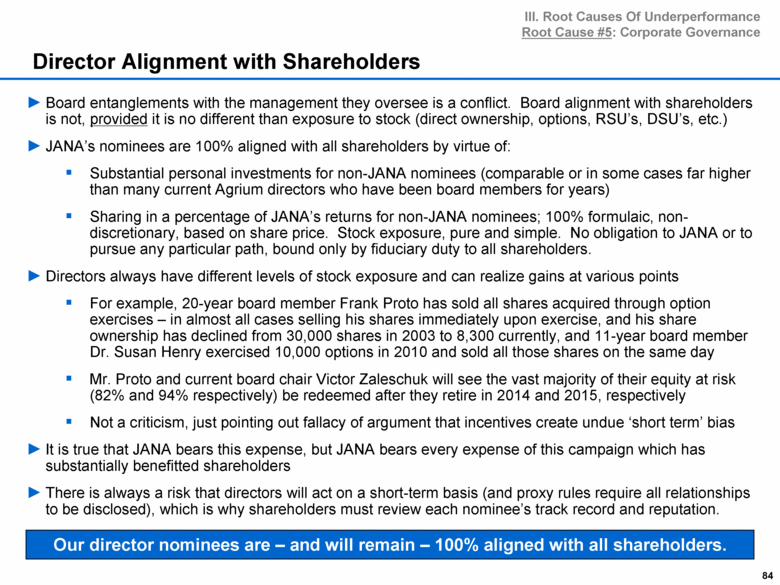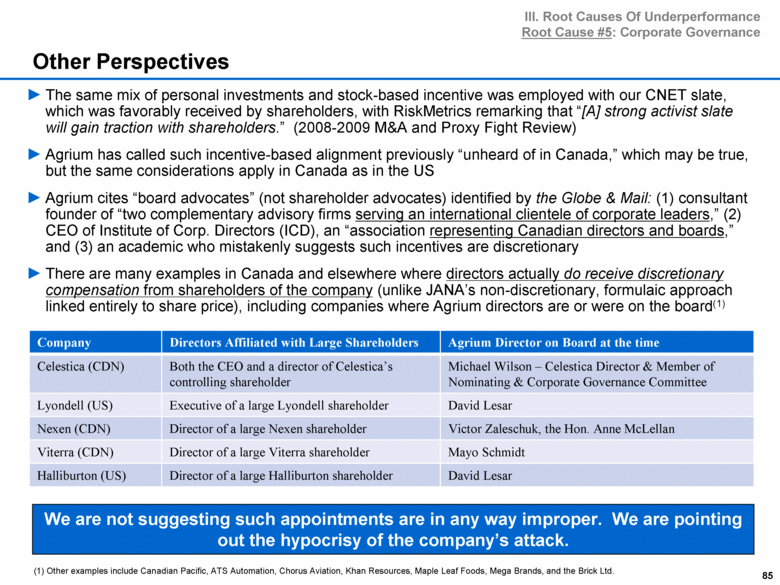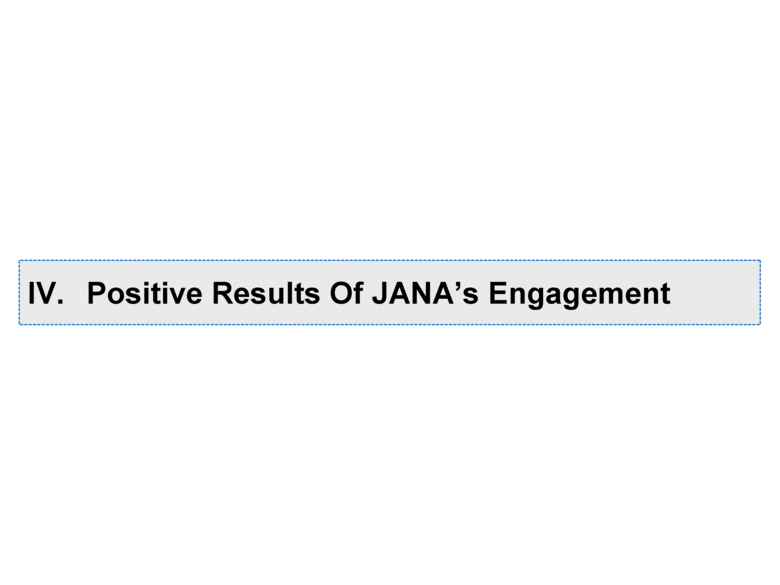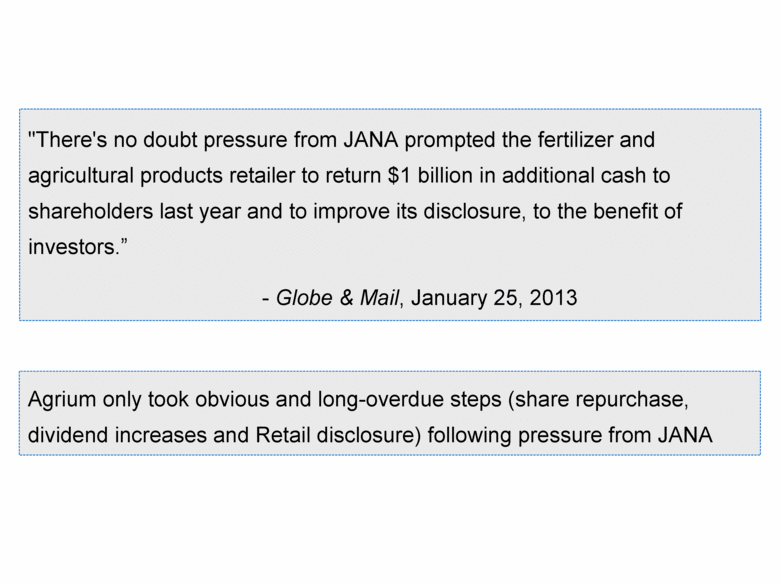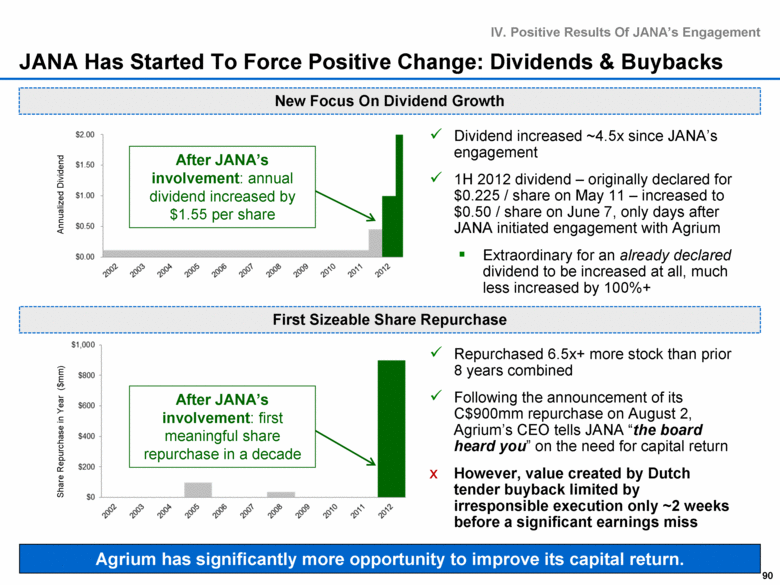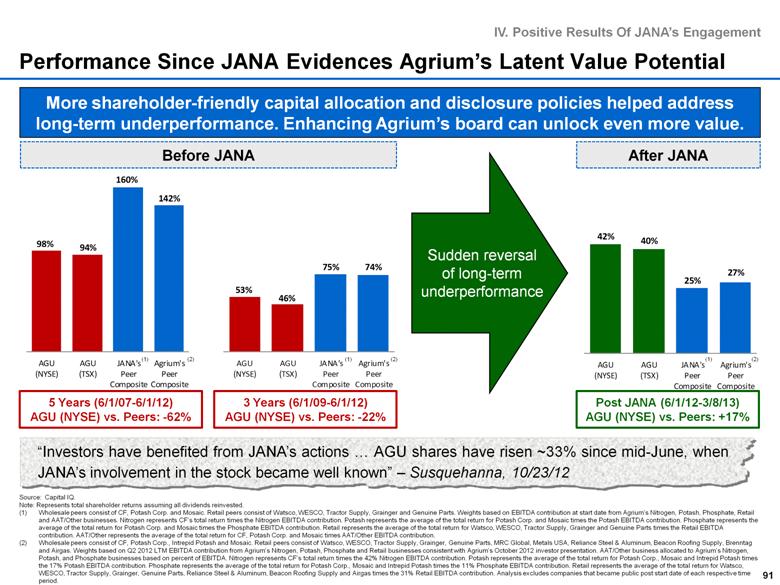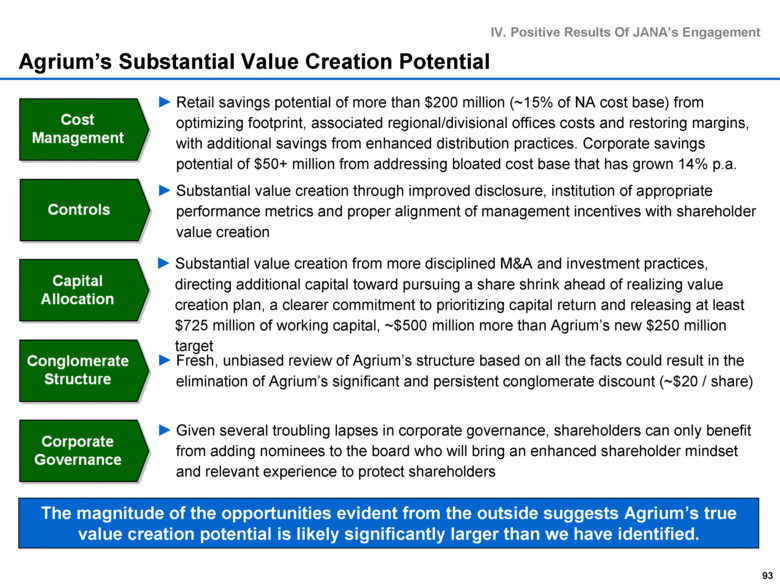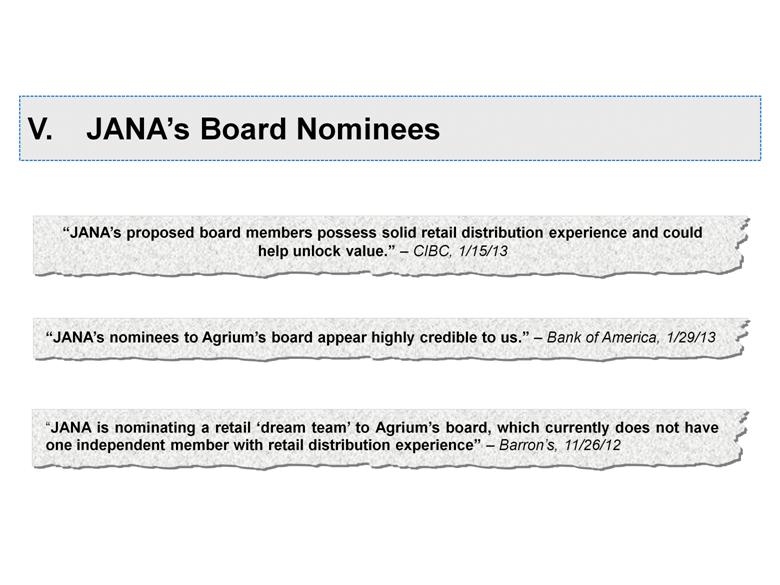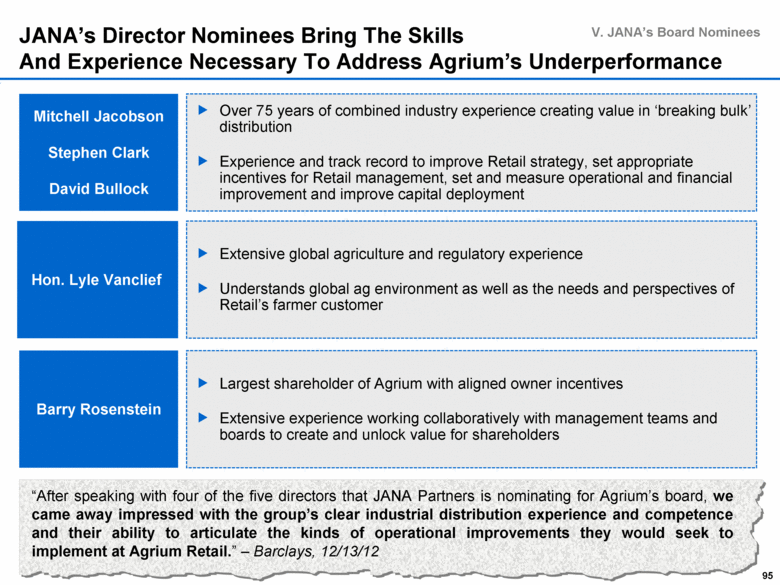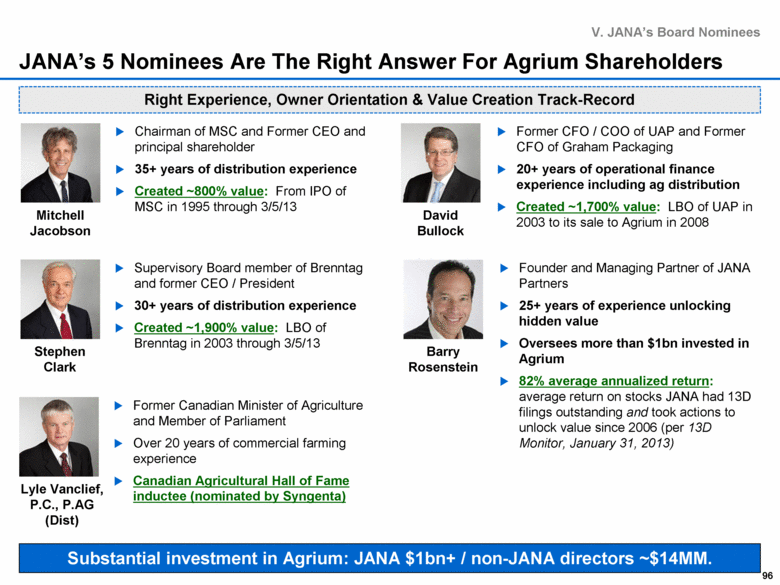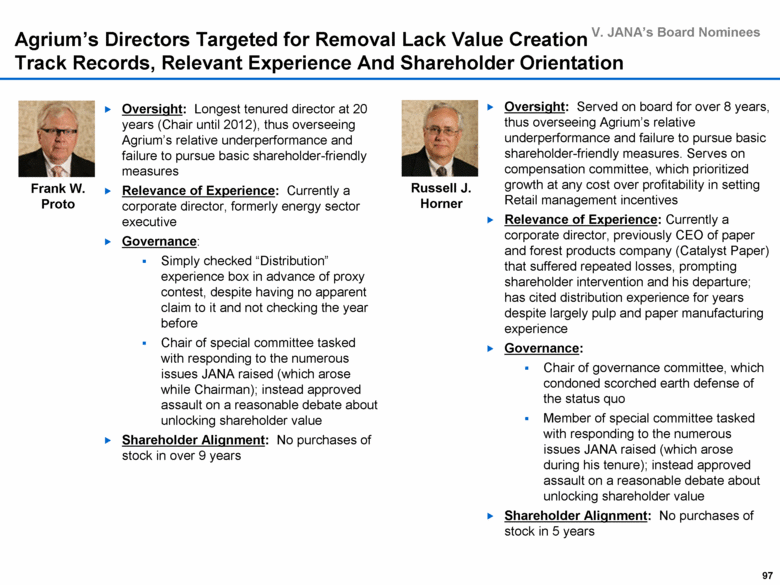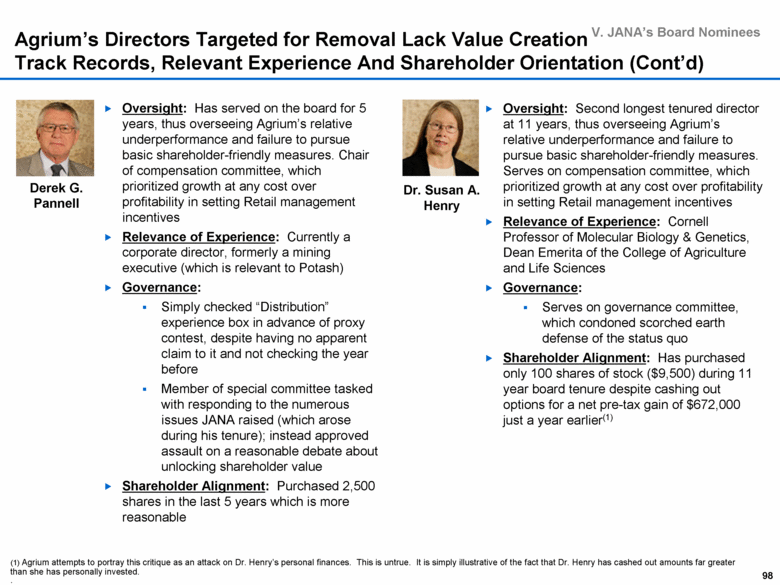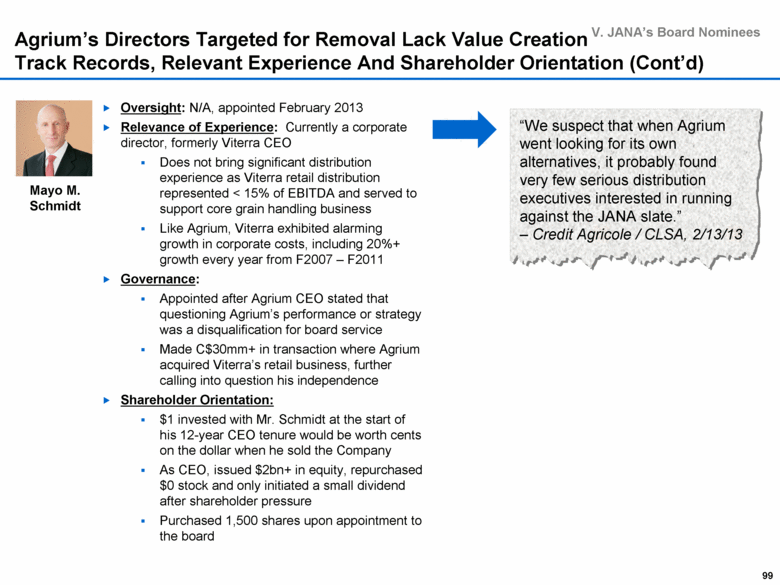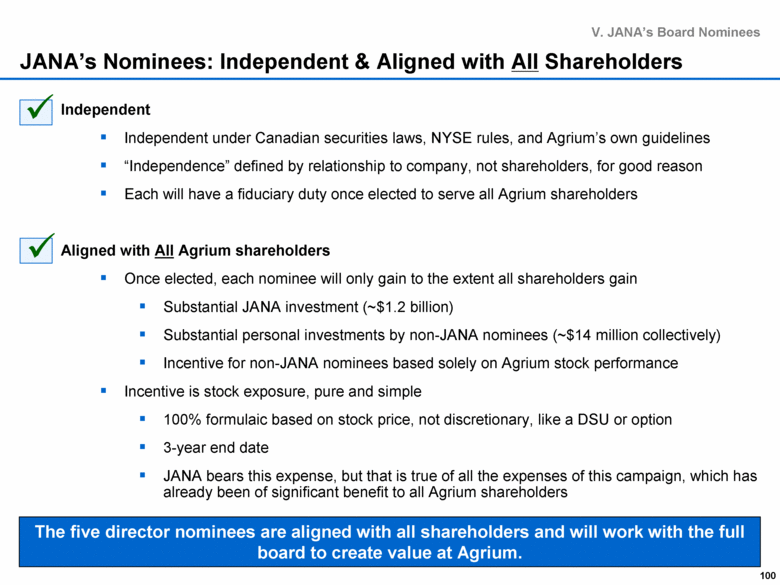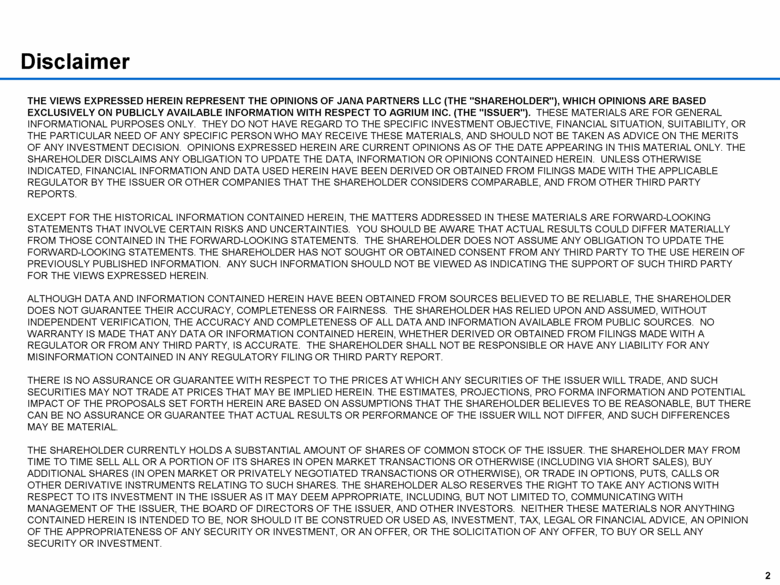
| THE VIEWS EXPRESSED HEREIN REPRESENT THE OPINIONS OF JANA PARTNERS LLC (THE "SHAREHOLDER"), WHICH OPINIONS ARE BASED EXCLUSIVELY ON PUBLICLY AVAILABLE INFORMATION WITH RESPECT TO AGRIUM INC. (THE "ISSUER"). THESE MATERIALS ARE FOR GENERAL INFORMATIONAL PURPOSES ONLY. THEY DO NOT HAVE REGARD TO THE SPECIFIC INVESTMENT OBJECTIVE, FINANCIAL SITUATION, SUITABILITY, OR THE PARTICULAR NEED OF ANY SPECIFIC PERSON WHO MAY RECEIVE THESE MATERIALS, AND SHOULD NOT BE TAKEN AS ADVICE ON THE MERITS OF ANY INVESTMENT DECISION. OPINIONS EXPRESSED HEREIN ARE CURRENT OPINIONS AS OF THE DATE APPEARING IN THIS MATERIAL ONLY. THE SHAREHOLDER DISCLAIMS ANY OBLIGATION TO UPDATE THE DATA, INFORMATION OR OPINIONS CONTAINED HEREIN. UNLESS OTHERWISE INDICATED, FINANCIAL INFORMATION AND DATA USED HEREIN HAVE BEEN DERIVED OR OBTAINED FROM FILINGS MADE WITH THE APPLICABLE REGULATOR BY THE ISSUER OR OTHER COMPANIES THAT THE SHAREHOLDER CONSIDERS COMPARABLE, AND FROM OTHER THIRD PARTY REPORTS. EXCEPT FOR THE HISTORICAL INFORMATION CONTAINED HEREIN, THE MATTERS ADDRESSED IN THESE MATERIALS ARE FORWARD-LOOKING STATEMENTS THAT INVOLVE CERTAIN RISKS AND UNCERTAINTIES. YOU SHOULD BE AWARE THAT ACTUAL RESULTS COULD DIFFER MATERIALLY FROM THOSE CONTAINED IN THE FORWARD-LOOKING STATEMENTS. THE SHAREHOLDER DOES NOT ASSUME ANY OBLIGATION TO UPDATE THE FORWARD-LOOKING STATEMENTS. THE SHAREHOLDER HAS NOT SOUGHT OR OBTAINED CONSENT FROM ANY THIRD PARTY TO THE USE HEREIN OF PREVIOUSLY PUBLISHED INFORMATION. ANY SUCH INFORMATION SHOULD NOT BE VIEWED AS INDICATING THE SUPPORT OF SUCH THIRD PARTY FOR THE VIEWS EXPRESSED HEREIN. ALTHOUGH DATA AND INFORMATION CONTAINED HEREIN HAVE BEEN OBTAINED FROM SOURCES BELIEVED TO BE RELIABLE, THE SHAREHOLDER DOES NOT GUARANTEE THEIR ACCURACY, COMPLETENESS OR FAIRNESS. THE SHAREHOLDER HAS RELIED UPON AND ASSUMED, WITHOUT INDEPENDENT VERIFICATION, THE ACCURACY AND COMPLETENESS OF ALL DATA AND INFORMATION AVAILABLE FROM PUBLIC SOURCES. NO WARRANTY IS MADE THAT ANY DATA OR INFORMATION CONTAINED HEREIN, WHETHER DERIVED OR OBTAINED FROM FILINGS MADE WITH A REGULATOR OR FROM ANY THIRD PARTY, IS ACCURATE. THE SHAREHOLDER SHALL NOT BE RESPONSIBLE OR HAVE ANY LIABILITY FOR ANY MISINFORMATION CONTAINED IN ANY REGULATORY FILING OR THIRD PARTY REPORT. THERE IS NO ASSURANCE OR GUARANTEE WITH RESPECT TO THE PRICES AT WHICH ANY SECURITIES OF THE ISSUER WILL TRADE, AND SUCH SECURITIES MAY NOT TRADE AT PRICES THAT MAY BE IMPLIED HEREIN. THE ESTIMATES, PROJECTIONS, PRO FORMA INFORMATION AND POTENTIAL IMPACT OF THE PROPOSALS SET FORTH HEREIN ARE BASED ON ASSUMPTIONS THAT THE SHAREHOLDER BELIEVES TO BE REASONABLE, BUT THERE CAN BE NO ASSURANCE OR GUARANTEE THAT ACTUAL RESULTS OR PERFORMANCE OF THE ISSUER WILL NOT DIFFER, AND SUCH DIFFERENCES MAY BE MATERIAL. THE SHAREHOLDER CURRENTLY HOLDS A SUBSTANTIAL AMOUNT OF SHARES OF COMMON STOCK OF THE ISSUER. THE SHAREHOLDER MAY FROM TIME TO TIME SELL ALL OR A PORTION OF ITS SHARES IN OPEN MARKET TRANSACTIONS OR OTHERWISE (INCLUDING VIA SHORT SALES), BUY ADDITIONAL SHARES (IN OPEN MARKET OR PRIVATELY NEGOTIATED TRANSACTIONS OR OTHERWISE), OR TRADE IN OPTIONS, PUTS, CALLS OR OTHER DERIVATIVE INSTRUMENTS RELATING TO SUCH SHARES. THE SHAREHOLDER ALSO RESERVES THE RIGHT TO TAKE ANY ACTIONS WITH RESPECT TO ITS INVESTMENT IN THE ISSUER AS IT MAY DEEM APPROPRIATE, INCLUDING, BUT NOT LIMITED TO, COMMUNICATING WITH MANAGEMENT OF THE ISSUER, THE BOARD OF DIRECTORS OF THE ISSUER, AND OTHER INVESTORS. NEITHER THESE MATERIALS NOR ANYTHING CONTAINED HEREIN IS INTENDED TO BE, NOR SHOULD IT BE CONSTRUED OR USED AS, INVESTMENT, TAX, LEGAL OR FINANCIAL ADVICE, AN OPINION OF THE APPROPRIATENESS OF ANY SECURITY OR INVESTMENT, OR AN OFFER, OR THE SOLICITATION OF ANY OFFER, TO BUY OR SELL ANY SECURITY OR INVESTMENT. Disclaimer 2 |
